A community blog focused on educational excellence and equity

About the topic
Explore classroom guidance, techniques, and activities to help you meet the needs of ALL students.
most recent articles

Shaking Up High School Math

Executive Functions and Literacy Skills in the Classroom

Connecting and Communicating With Families to Help Break Down Barriers to Learning
Discover new tools and materials to integrate into you instruction.

Culture, Community, and Collaboration

Vertical Progression of Math Strategies – Building Teacher Understanding

“Can I have this? Can I have that?”
Find instructions and recommendations on how to adapt your existing materials to better align to college- and career-ready standards.

To Teach the Truth

Helping Our Students See Themselves and the World Through the Books They Read in Our Classrooms

Textbooks: Who Needs Them?
Learn what it means for instructional materials and assessment to be aligned to college- and career-ready standards.

Let’s Not Make Power ELA/Literacy Standards and Talk About Why We Didn’t

What to Consider if You’re Adopting a New ELA/Literacy Curriculum

Not Your Mom’s Professional Development
Delve into new research and perspectives on instructional materials and practice.

Summer Reading Club 2023

Synergy between College and Career Readiness Standards-Aligned Instruction and Culturally Relevant Pedagogy

Children Should be Seen AND Heard
- Submissions Guidelines
- About the Blog
Designing Effective Homework
Best practices for creating homework that raises student achievement

Homework. It can be challenging…and not just for students. For teachers, designing homework can be a daunting task with lots of unanswered questions: How much should I assign? What type of content should I cover? Why aren’t students doing the work I assign? Homework can be a powerful opportunity to reinforce the Shifts in your instruction and promote standards-aligned learning, but how do we avoid the pitfalls that make key learning opportunities sources of stress and antipathy?
The nonprofit Instruction Partners recently set out to answer some of these questions, looking at what research says about what works when it comes to homework. You can view their original presentation here , but I’ve summarized some of the key findings you can put to use with your students immediately.
Does homework help?
Consistent homework completion has been shown to increase student achievement rates—but frequency matters. Students who are given homework regularly show greater gains than those who only receive homework sporadically. Researchers hypothesize that this is due to improved study skills and routines practiced through homework that allow students to perform better academically.
Average gains on unit tests for students who completed homework were six percentile points in grades 4–6, 12 percentile points in grades 7–9, and an impressive 24 percentile points in grades 10–12; so yes, homework (done well) does work. [i]
What should homework cover?
While there is little research about exactly what types of homework content lead to the biggest achievement gains, there are some general rules of thumb about how homework should change gradually over time.
In grades 1–5, homework should:
- Reinforce and allow students to practice skills learned in the classroom
- Help students develop good study habits and routines
- Foster positive feelings about school
In grades 6–12, homework should:
- Prepare students for engagement and discussion during the next lesson
- Allow students to apply their skills in new and more challenging ways
The most often-heard criticism of homework assignments is that they simply take too long. So how much homework should you assign in order to see results for students? Not surprisingly, it varies by grade. Assign 10-20 minutes of homework per night total, starting in first grade, and then add 10 minutes for each additional grade. [ii] Doing more can result in student stress, frustration, and disengagement, particularly in the early grades.
Why are some students not doing the homework?
There are any number of reasons why students may not complete homework, from lack of motivation to lack of content knowledge, but one issue to watch out for as a teacher is the impact of economic disparities on the ability to complete homework.
Multiple studies [iii] have shown that low-income students complete homework less often than students who come from wealthier families. This can lead to increased achievement gaps between students. Students from low-income families may face additional challenges when it comes to completing homework such as lack of access to the internet, lack of access to outside tutors or assistance, and additional jobs or family responsibilities.
While you can’t erase these challenges for your students, you can design homework that takes those issues into account by creating homework that can be done offline, independently, and in a reasonable timeframe. With those design principles in mind, you increase the opportunity for all your students to complete and benefit from the homework you assign.
The Big Picture
Perhaps most importantly, students benefit from receiving feedback from you, their teacher, on their assignments. Praise or rewards simply for homework completion have little effect on student achievement, but feedback that helps them improve or reinforces strong performance does. Consider keeping this mini-table handy as you design homework:
The act of assigning homework doesn’t automatically raise student achievement, so be a critical consumer of the homework products that come as part of your curriculum. If they assign too much (or too little!) work or reflect some of these common pitfalls, take action to make assignments that better serve your students.
[i] Cooper, H. (2007). The battle over homework (3rd ed.). Thousand Oaks, CA: Corwin Press.
[ii] Cooper, H. (1989a). Homework .White Plains, NY: Longman.
[iii] Horrigan, T. (2015). The numbers behind the broadband ‘homework gap’ http://www.pewresearch.org/fact-tank/2015/04/20/the-numbers-behind-the-broadband-homework-gap/ and Miami Dade Public Schools. (2009). Literature Review: Homework. http://drs.dadeschools.net/LiteratureReviews/Homework.pdf
- ELA / Literacy
- Elementary School
- High School
- Mathematics
- Middle School
Leave a Reply Cancel reply
Your email address will not be published. Required fields are marked *
About the Author: Claire Rivero is the Digital Strategy Manager for Student Achievement Partners. Claire leads the organization’s communications and digital promotion work across various channels including email, Facebook, Twitter, and Pinterest, always seeking new ways to reach educators. She also manages Achieve the Core’s blog, Aligned. Prior to joining Student Achievement Partners, Claire worked in the Communications department for the American Red Cross and as a literacy instructor in a London pilot program. Claire holds bachelor’s degrees in English and Public Policy from Duke University and a master’s degree in Social Policy (with a concentration on Education Policy) from the London School of Economics and Political Science.
Stay In Touch
Like what you’re reading? Sign up to receive emails about new posts, free resources, and advice from educators.
Professional Development
- Login Talk to a Mentor
15 Innovative School Homework Ideas to Make Learning Fun

Aashita Pillai
Aashita is a writer here at Suraasa and has formerly worked as a Teacher Mentor for a couple of years. She wields words like weapons to help readers get clear and concise information.
Introduction
General tips to keep students hooked to school homework, 15 innovative school homework ideas to engage your students, theme a: arts and crafts, theme b: physical and outside activities, theme c: digital activities, theme d: games, theme e: entrepreneurship.
“Hi teachers! I am your old friend, School Homework. Over time as education changed, so have I— thanks to the endless innovations that happened to me. Let me take you through my life and the various innovations that made me your best friend- I was born in the 1920s to help students reinforce what they learned in class. Until the 1980s, I was basically just pen-and-paper-based assignments. The Internet was born in 1983. From there onwards, I made my stride into the ‘digital era’.

Until the beginning of 2020, I was slowly being integrated within online platforms and technology to help students learn better. Then at the onset of 2020, the world plunged into the COVID-19 pandemic. Schools shifted to a ‘remote learning’ mode of education. During this pandemic, you and I became very crucial in ensuring the continuity of our students’ learning. You all embraced creative approaches to keep the students engaged. You leveraged interactive games, virtual simulations, & more to make me engaging. Gone are the days when you, my dear teachers, would limit your homework to worksheets, textbook questions, literature reviews, and reports. Today as we stand here in 2023, there is no limit to innovative and exciting homework formats! Well, that’s from me. See you in the classrooms!”

So teachers, we heard from homework about how it has evolved over time. As it said, many innovative ways have come up to reinforce our students' learning. So, are you ready to make your students fall in love with these new school homework ideas? Let’s begin with understanding some general tips to keep your students engaged with their school homework.
1. Make it Relevant and Meaningful
Connect the school homework to their lives, interests, or current events to make it more meaningful and relatable. For example, if it’s Christmas time, you can ask your students to explore the themes of charity, storytelling, etc.
2. Give Them a Choice
Allow students to have some choice and autonomy in their assignments. Ask them to select the format (e.g. written format in the online medium, oral format in the offline medium) in which they want to submit their homework. When they feel a sense of ownership, they are more likely to be motivated and engaged. This is how you become a 21st-century teacher who uses differentiated learning.
3. Celebrate Their Achievements
When children get appreciated for their achievements or good behaviour, it boosts their self-confidence. It encourages them to repeat those actions. This creates a positive learning environment. They are more likely to deliver results when appreciated for their actions. Hence, you can celebrate their achievements via small rewards, recognition or a display of their work in class.
Let's move to the next part of this blog, where we will share innovative school homework ideas that will turn mundane homework into engaging learning sessions! After assigning any of these innovative homework ideas, you might never hear students’ innovative excuses to avoid homework! To give you a quick run-through, these ideas have been grouped under some common themes. Under each theme, you will learn how to use 3 ideas listed alongside relevant examples to comprehend it completely. Come along as we give the ratty old homework a MAKEOVER!
By infusing the joy of arts and crafts into school homework, you can tap into the innate curiosity and imagination of your students. And you never know, you might end up being the person that shaped the next Da Vinci! So, let’s get right into it:
1. Create Your Storybook

We all have heard stories. We have loved them and adored them. So why not give our students a chance to write one? After the students submit their storybooks, you can review their stories and give personalised feedback. Such feedback addresses each student’s individual needs, strengths, and areas for improvement. This fosters a student-centric learning environment. Let's look at a few examples to understand this school homework approach more closely:
| Grade | School Homework to Assign Your Students |
|---|---|
| Homework for classes 1 to 5(or Primary School) | Create a storybook on their favourite fictional characters from their English Literature Syllabus, such as Harry Potter or Matilda. |
| Homework for classes 6 to 8(or Middle School) | Design a narrative-based comic book retelling a classic play like "To Kill a Mockingbird". |
| Homework for classes 9 to 12(or High School) | Craft a novella inspired by a chosen literary work from the English Literature syllabus. |
2. Make Your Own Board Game

Do you remember the joy of gathering around a table, rolling a dice, and playing Snakes & Ladders? As kids and even as adults, many of us love spending our time playing board games. Now, picture becoming the teacher that integrates school homework with a board game! Students can design board games and incorporate artistic elements into their theme, board layout, cards, etc. They can become architects of fun and learning!
Let's look at a few examples to understand this school homework approach more closely:
| Grade | School Homework to Assign Your Students |
|---|---|
| Homework for classes 1 to 5(or Primary School) | Design a board game on animals with jungle-themed cards. Add tasks like imitating the animal or guessing the animal’s habitat. |
| Homework for classes 6 to 8(or Middle School) | Create a board game depicting important events from World War 2. Add tasks like creating game cards with historical information. |
| Homework for classes 9 to 12(or High School) | Develop a strategic board game centred around a complex social issue or global challenge. Add tasks like creating a board journey of a historical event. |
3. Construct a Birdhouse

Now, let’s tap into the sweet nostalgia of DIY(Do it Yourself) Projects. It could be something as simple as bedsheet forts or something a little more complex like a birdhouse 🙂 Won’t it be wonderful to watch your students feel a sense of accomplishment when they build their own handmade creations? Let’s focus on the idea of constructing a birdhouse. By assigning students this homework, you’ll additionally be encouraging kinesthetic learning .
Let's look at a few examples to understand this school homework approach more closely:
| Grade | School Homework to Assign Your Students |
|---|---|
| Homework for classes 1 to 5(or Primary School) | Draw a birdhouse on cardboard or on paper. |
| Homework for classes 6 to 8(or Middle School) | Construct a birdhouse from scratch, following specific dimensions and incorporating elements that attract certain bird species. Research and create a guide on local bird species and their habitats. |
| Homework for classes 9 to 12(or High School) | Design and build an elaborate birdhouse that incorporates sustainable materials and advanced woodworking techniques. Conduct a study on nesting preferences and document findings. |
Students love spending their time outdoors. Assigning school homework that requires them to be outside is a big plus! It will also help them apply what’s taught in class in real-life situations and promote active learning.
4. Participate in a Scavenger Hunt

Everyone loves a good old mystery! Give your students the chance to be modern-day ‘Sherlock Holmes’ as they set out on scavenger hunts. Let's look at a few examples to understand this school homework approach more closely:
| Grade | School Homework to Assign Your Students |
|---|---|
| Homework for classes 1 to 5(or Primary School) | Join a geometry-themed scavenger hunt and search for items of different shapes in their neighbourhood. |
| Homework for classes 6 to 8(or Middle School) | Join a historical scavenger hunt in the community, where students discover landmarks related to local history. |
| Homework for classes 9 to 12(or High School) | Join a technology-based scavenger hunt using smartphones or tablets. Students can incorporate QR codes and online resources. |
5. Maintain a Physical Activity Journal

In this digital age, where mobile and laptop screens often dominate, the majority of the students lead sedentary lifestyles. School homework which encourages physical activity, can be a game-changer! And what better than maintaining a physical activity journal that helps with it? Additionally, it will also promote the healthy habit of having an active lifestyle among students. Getting students to journal can seem tough, but with the right motivation & incentives, it can be done. Additionally, this can also be a fun summer holiday homework, where students can keep track of their activities all summer! Encourage them to document their daily exercise triumphs. Push them to go beyond their own records! Ask them to explore science concepts- BMI, heart and pulse rates, diet, and nutrition! Once you do this, exercise will not just be about breaking a sweat anymore. It will also be something that incorporates learning! Let's look at a few examples to understand this school homework approach more closely:
| Grade | School Homework to Assign Your Students |
|---|---|
| Homework for classes 1 to 5(or Primary School) | Keep a daily journal of physical activities, such as playing sports or riding a bike. Students can record the duration, type of activity, and how it made them feel. |
| Homework for classes 6 to 8(or Middle School) | Maintain a weekly activity log. Students can set fitness goals, track their progress, and reflect on the benefits of regular physical activity. |
| Homework for classes 9 to 12(or High School) | Create a comprehensive fitness and wellness journal, tracking not only physical activities but also nutrition, sleep patterns, and mental well-being. |
6. Conduct a Survey at a Local Supermarket

This outdoor activity is an extremely fun option for school homework. Most kids love running through the different aisles in a supermarket. Introducing a concept like surveys here gives them a chance to do some ‘real-life’ work and also provides much-needed relief to their parents! Let's look at a few examples to understand this school homework approach more closely:
| Grade | School Homework to Assign Your Students |
|---|---|
| Homework for classes 1 to 5(or Primary School) | Ask students to talk to a supermarket owner about the number of chocolates they stock v/s the number of chocolates they sell. |
| Homework for classes 6 to 8(or Middle School) | Design a multiple-choice questionnaire to survey shoppers about their shopping preferences. |
| Homework for classes 9 to 12(or High School) | Conduct a comprehensive survey on consumer behaviour, market trends, or sustainable practices at the local supermarket. Analyse the data using statistical methods. |
In the age of tech-savvy students, we often find parents complaining about the excess screen time with their kids. But what if you could harness the untapped potential in technology? Today's kids are already immersed in the digital world, so why not tap into their enthusiasm and merge it with learning? Let’s look at some innovative methods of assigning digital activities for school homework:
7. Record a Virtual Job Application

This can be a fun homework assignment for students of all grades. One thing that we often forget as teachers is that school is not just about the present; it's also about the future. But often, we don’t discuss the future. This results in students being almost lost when it comes to their future career opportunities. This is exactly where this school homework activity helps. Assigning school homework related to professions is a great chance for students to explore their career options. This, in turn, will help them be better prepared for life after school. Let's look at a few examples to understand this school homework approach more closely:
| Grade | School Homework to Assign Your Students |
|---|---|
| Homework for classes 1 to 5(or Primary School) | Create a video where students share their aspirations and talk about their role models. They can dress up as that person and talk about their profession. |
| Homework for classes 6 to 8(or Middle School) | Students prepare a resume and cover letter for a fictional job and create a brief introduction video. |
| Homework for classes 9 to 12(or High School) | Research the companies or leaders students want to work with in the future. Record an elevator pitch describing their strengths and weaknesses and why they are perfect for a job role! |
8. Participate in Online Collaborative Projects

Online projects are a catalyst for active learning and student engagement. They can be a tool for you to create a dynamic learning environment that goes beyond traditional classroom boundaries. Additionally, these activities enhance digital literacy and empower students to leverage technology for learning. Working on online collaborative projects will also help students learn how to function together as a team. This is something that also prepares them for life beyond school, where it’s crucial to learn to work together.
| Grade | School Homework to Assign Your Students |
|---|---|
| Homework for classes 1 to 5(or Primary School) | Collaborate with classmates on a digital art project using online drawing tools. |
| Homework for classes 6 to 8(or Middle School) | Engage in an online group discussion or debate with students from other schools on a specific topic. |
| Homework for classes 9 to 12(or High School) | Join a global online collaborative project, such as a virtual science fair or a collaborative writing initiative. |
9. Virtual Cultural Exchange

Cultural exchange events open doors to new horizons, offering students a unique chance to explore diverse cultures. By immersing them in new traditions, you develop acceptance, and empathy in your students. You give them a chance to have a broad and more inclusive perspective of the world. Let's look at a few examples to understand this school homework approach more closely:
| Grade | School Homework to Assign Your Students |
|---|---|
| Homework for classes 1 to 5(or Primary School) | Buddy pair students and encourage them to engage in conversations while donning traditional costumes. |
| Homework for classes 6 to 8(or Middle School) | Create a presentation that explores similarities and differences between the cultures of their peers. |
| Homework for classes 9 to 12(or High School) | Engage in virtual cultural exchange programmes with students from various countries. Conduct virtual interviews and share experiences. |
Game-based school homework is one of the best ways to engage your students. Integrating learning within games creates a powerful synergy where education and entertainment merge seamlessly. It’s time to tap into your students’ natural love for games and leverage it!
10. Use Minecraft as a Learning Tool

Ah, Minecraft! A name that brings back memories of endless adventures in pixelated landscapes. It’s a game that is a nostalgic reminder of our childhood. But did you know that Minecraft can be more than just a game? It can be a powerful learning tool to level up the educational experience of your students. 💡Learn how to leverage Minecraft to make your classrooms more engaging! Let's look at a few examples to understand this school homework approach more closely:
| Grade | School Homework to Assign Your Students |
|---|---|
| Homework for classes 1 to 5(or Primary School) | Create a Minecraft world that represents a historical monument like the Taj Mahal. |
| Homework for classes 6 to 8(or Middle School) | Design a virtual science experiment within Minecraft. |
| Homework for classes 9 to 12(or High School) | Utilize Minecraft as a platform for architectural design and build virtual structures using architectural principles. |
11. Encourage Role-Playing Games

Lights, camera, action! Role-playing games(RPGs) let students step into the shoes of a character and bring lessons to life. Even though RPGs are not typically classified as games, their unique blend of learning and fun makes them ideal for educational purposes. You can assign students to act out roleplays based on a historical event, scientific concept or work of literature. They can develop characters, write dialogues, and present this to the class. Let's look at a few examples to understand this school homework approach more closely:
| Grade | School Homework to Assign Your Students |
|---|---|
| Homework for classes 1 to 5(or Primary School) | Spend a day as your favourite character and write your experience. |
| Homework for classes 6 to 8(or Middle School) | Students can design a setting based on a science concept and enact simple scripts to explain the concept. |
| Homework for classes 9 to 12(or High School) | Engage in a literary role-playing game where students assume the roles of characters from a play. |
12. Online Challenges

You can introduce online challenges like coding of varying difficulties for different grade levels. Platforms like Scratch or Code.org can be helpful for this purpose. Coding challenges offer hands-on experience to students. It allows them to practice coding concepts and algorithms in a practical and engaging manner. Let's look at a few examples to understand this school homework approach more closely:
| Grade | School Homework to Assign Your Students |
|---|---|
| Homework for classes 1 to 5(or Primary School) | Participate in online math challenges or puzzles. |
| Homework for classes 6 to 8(or Middle School) | Engage in coding challenges on platforms like Scratch or Code.org. |
| Homework for classes 9 to 12(or High School) | Join coding competitions or hackathons, either individually or as part of a team, to solve complex programming problems. |
In today's competitive world, students who embrace innovative thinking and an entrepreneurial mindset stand out. As a teacher, you can nurture these qualities in your students via thought-provoking school homework. Such assignments can ignite students' passion for problem-solving, creative thinking, and strategic planning. Let’s look at some of the ideas below.
13. Pitch Your Business Idea

Have you watched shows like Shark Tank or Billion Dollar Buyer? Have you been completely captivated by the business pitches on these shows? Now, imagine doing the same for your students— unleashing their entrepreneurial spirit. It’s time to bring the hustle of the business world into your classrooms! Encourage students to develop a business idea and create a persuasive pitch. They should research their target market, competitors, and unique selling points. In fact, students can present their pitch using multimedia tools, such as slides or videos, highlighting the problem they're solving and the value their business brings. Let's look at a few examples to understand this school homework approach more closely:
| Grade | School Homework to Assign Your Students |
|---|---|
| Homework for classes 1 to 5(or Primary School) | Give some business ideas to students like a craft business or lemonade stand and ask them to choose one and why. |
| Homework for classes 6 to 8(or Middle School) | Present a solution for a problem in the school or community. Students can brainstorm and then present their creative solutions. |
| Homework for classes 9 to 12(or High School) | Challenge students to create a detailed business proposal, including market analysis, financial projections, and marketing strategies, for a unique business concept. |
14. Design a Mobile App

Smartphones have become an integral part of our lives. Think about the countless hours that you spend on your smartphone, exploring different apps that make your life easier. This is a practice growing like fire amongst kids as well and is cause for serious concern! What if they spend time on their phone and learn at the same time? This homework assignment encourages students to apply their creativity and technical skills to develop a concept for a mobile application. Additionally, you can also assign this as a holiday homework assignment and let students go wild with learning during summer! Let's look at a few examples to understand this school homework approach more closely:
| Grade | School Homework to Assign Your Students |
|---|---|
| Homework for classes 1 to 5(or Primary School) | * |
| Homework for classes 6 to 8(or Middle School) | Divide students into teams and ask to come up with app ideas after market research. |
| Homework for classes 9 to 12(or High School) | Create wireframes and prototypes for a mobile app using basic coding and UI/UX. |
*Technologies like designing mobile applications can be too complex for the primary school. Hence, we focus on this idea only for middle and high school students.
15. Set up a Stall at the School Fair

This homework acts as an Introduction to Business 101 class for students of all grade levels. Students get to decide what stall to put up, then work on the logistics and finally manage the stall and finances on D-Day. This will teach students real-world skills and give them a feeling of ownership. Let's look at a few examples to understand this school homework approach more closely:
| Grade | School Homework to Assign Your Students |
|---|---|
| Homework for classes 1 to 5(or Primary School) | Set up lemonade stands, make posters, and have some light-hearted and healthy competition to see who makes the most money at an internal class fair! |
| Homework for classes 6 to 8(or Middle School) | Plan and execute a stall that offers a service, such as face painting, a photo booth, or a mini arcade game. |
| Homework for classes 9 to 12(or High School) | Set up a stall, selling products or services that they have created or sourced. |
Grade-Specific Tips to follow while Preparing School Homework
1. primary school students .
- Keep it Interactive and Hands-on Younger children thrive on tactile and interactive experiences. Incorporate more of arts and crafts, storytelling, etc., to make homework enjoyable for them.
- Use Visuals Vibrant colours will capture their attention and make tasks visually appealing.
- Keep it Short Primary school students have limited attention spans. Give them small tasks that they can accomplish in a limited timeframe.
2. Middle School students
- Offer More Choices Middle schoolers are often teenagers already on the precipice of changes beyond their control. They will appreciate having some control over their learning. Allow them to choose topics or formats that align with their interests.
- Incorporate Technology Middle school students are often technologically savvy. Utilise online resources, interactive platforms, and digital tools to make homework more engaging and relevant to their interests.
- Encourage Independent Research Foster their curiosity by assigning research-based projects. Encourage them to explore various sources and present their findings in creative ways.
3. High School Students
- Encourage Critical Thinking and Analysis High schoolers are capable of higher-order thinking skills. Assign tasks that require critical thinking, problem-solving and analytical thinking.
- Encourage Self-expression Offer creative assignments that allow them to express their thoughts, opinions and ideas. Remember that they are young adults finding their voice in a loud world. Encourage them to write essays, create multimedia presentations, or engage in spirited debates.
- Push for Practical Application Assign tasks that connect to real-world situations, allowing them to see the relevance and importance of their learning.
How to Improve Your Homework and Other Teaching Strategies?
Do you want to learn about more strategies to improve school homework? What if you could upskill and improve all your teaching strategies- classroom management, assessment, and lesson planning, among many others? Book a call with a mentor to get dedicated teacher counselling on upskilling and improving your teaching strategies.
In a world where school homework is generally met with students’ whining, you can use these approaches to turn it into a gateway for innovation! By infusing ideas such as game-based learning, digital activities, and arts and crafts, you can help students engage with school homework meaningfully. This will foster a lifelong love for learning among your students, ultimately helping them succeed in and beyond the classroom. Want a short compilation of all the amazing school homework ideas? Click the button below
Meet Suraasa, the World’s First Career Growth Platform for Teachers.

Keep Reading
.webp)
Why Teaching Aids Matter In Modern Classrooms?
Discover how teaching aids can add fun and engagement to your classroom, transforming the teaching-learning experience for you and your students.

Assessment & Evaluation: Every Teacher’s Favorite Tools for Effective Instruction
Confused by assessment vs. evaluation? This blog explains the meaning & differences of both! Learn how to use them for data-driven decisions & student success.
.webp)
7 Strategies to Improve Teaching and Learning in Your Classroom
These 7 effective strategies can enhance classroom learning and teaching. They can create an inclusive environment, integrate technology, and promote active learning.
- Skip to Nav
- Skip to Main
- Skip to Footer

How to Create Effective Homework
Please try again
Based on a recent spate of articles on homework, it’s clear that the homework wars -- how much? how often? -- are still topic of big interest to both parents and teachers. Some teachers hate to give homework; others see it as a vital necessity. But according to some research presented by Annie Murphy Paul, the question isn’t how much, but whether the homework teachers do give actually advances learning.
“A recent study, published in the Economics of Education Review,” Paul wrote in “How Can We Make Homework Worthwhile?” , “reports that homework in science, English and history has ‘little to no impact’ on student test scores. (The authors did note a positive effect for math homework.) Enriching children’s classroom learning requires making homework not shorter or longer, but smarter.” Paul goes on to describe specific practices, like spaced repetition (in which information is presented and repeated spaced out over time), retrieval practice (testing or quizzing not for assessment, but to reinforce material learned), and cognitive disfluency (“desirable difficulties” used to make learning stick) -- all memory/retrieval techniques that may help homework move beyond busy work and advance real learning.
But to get those elements to work, said Fires in the Mind author and speaker Kathleen Cushman, students must be motivated to do their homework in the first place. One example Cushman gave was creating a project so interesting and involved, students naturally wanted to keep working on it after the bell rang. She pointed to a chapter in the book where she describes a particular motivation for some high school students she interviewed, under the heading “Homework We Actually Want to Do”:
“Christina and Nicholas both remembered a global studies unit on the French Revolution in which students acted out a courtroom trial of the king and queen. The project brought even routine homework assignments to life, they said.
“I was the queen. So of course I wanted to do my homework all the time, so I could know the facts of what happened and what didn’t happen, know what I wanted to say when someone tried to say I did this or that thing. I could say, ‘Oh no, I didn’t!’ - because I’d read my homework,” said Christina.
Christina was using a form of retrieval practice -- but because it was so much fun to be the queen, she only knew she wanted to stay in character. The queen had to study the information to get it right.
Another way teachers can take a good, hard look at homework practices, said Cushman, is to ask themselves a few vital questions: “Does this homework ask each student to practice something that the student hasn’t yet mastered? Does the student clearly see its purpose? When students are asked to repeat or rehearse something, does it require them to focus? Or can they do it without really paying attention?” If the homework meets these criteria, she said, then it falls into the desirable realm of “deliberate practice .”
Dan Bisaccio, former high school science teacher and now Director of Science Education at Brown University, said that after years of experience giving homework to high school students, he now “preaches” to his future teachers: “Homework should be practice and extensions of what happens in class and should not be ‘new learning,’” he said. “That is, students [shouldn’t be] having to teach themselves new content or skills.”
He said he agreed with Cushman that motivation is key, and tried to design homework that kept students interested. “Teachers need to clue into what motivates their students, giving them something that they really want to complete, and complete well.” One assignment Bisaccio used, called an “Experience Map,” asked students to create a map of their experiences after a field study or other important project - a technique employing both retrieval practice and the somewhat trickier interleaving, a “desirable difficulty” in which problems of different types are presented in one assignment, making students think harder to come up with solutions and answers.
“We ‘map’ mentally and physically each day. It helps to keep us orientated through our frenzied sun-up to sun-down daily experiences,” reads the assignment. Directions are to draw a field experience map, including -- with regard to the class -- where students have been, what they have done, new challenges, and insights. Special suggestions for drawing include “a place of danger, a favorite place, a place of power, a place with a secret.” Students are also called upon to map the places where they learned the most, where they were challenged the most, and where the funniest experience happened.
In addition, Bisaccio asked students to write what had challenged them most as a learner, what had stretched their limits most -- meant to be reflections just for students themselves, and asked to be kept on the back of the map. “What they wrote on the back was not shared with others,” he said. Once the assignment was completed, maps were posted to form a class atlas of what they had learned.
All the examples included here, however, are examples of homework in a traditional classroom. What about homework in a flipped classroom , where the lectures, usually videos, are the homework? A recent New York Times article on flipped classrooms may provide insight into flipping homework on its head, too: it quoted high school senior Luwayne Harris, saying, “Whenever I had a problem on the homework, I couldn’t do anything about it at home. Now if I have a problem with a video, I can just rewind and watch it over and over again.”

Homework: How to Effectively Build the Learning Bridge

How has the global health crisis impacted the place that homework has in student learning and the school-home connection? Homework holds its place as a school tradition, expected by students and their parents as part of the experience of growing and learning. While there is ongoing debate about homework’s effectiveness, it is traditionally seen as a tool that strengthens academics by providing learning practice at home. John Hattie’s meta-analysis of relevant research on educational practices found that the overall effects of homework on learning are positive, and that the positive effect is highest for junior high and high school students but generally neutral for elementary students. In addition, there is variability depending on the type of homework as well as student demographics (Hattie, 2008).
Schools implementing the Responsive Classroom approach, whether in person or virtually, use homework to effectively build a learning bridge between home and school. When homework is used as a tool to build social, emotional, and academic learning beyond the school day, it takes on a different look and purpose than just more work to do at home. The goal of Responsive Classroom schools is to design homework that meets the basic needs of significance and belonging for every student by strengthening relationships, differentiating what success looks like for each child, and supporting students’ social, emotional, and academic learning.
Focus on Relationships
Homework that impedes relationships— either teacher-to-student, teacher-toparent, or student-to-parent—can potentially damage the home-school partnership. When educators examine the amount, type, and expectations of homework, they often start with the impact of homework on academic achievement. But when schools look beyond academic achievement and also include relationships, they will often rethink the look and purpose of homework.
Effectively building this school-to-home connection starts by replacing homework that impedes relationships with homework that will enhance them. Examples for building these connections include ways for students to share about family traditions, cultural practices, and/or family adventures. Lauren Komanitsky, a special education teacher at Christa McAuliffe Middle School in Jackson, New Jersey, observes:
I’ve seen tremendous enthusiasm for homework and projects that involve family members and their family history. [Students] love to learn about ancestors, interesting facts and stories, and simply getting a deeper understanding of their background. It inspires pride in them and that’s important for their identity. Students also love to do surveys and interviews of their family members. I think anything designed to create good, meaningful conversation between students and their families is time well spent. Lauren Komanitsky (personal communication, February 7, 2021)
Schools that use homework to strengthen home-school relationships embed opportunities for students to develop belonging and significance. As students share the home connections with their classmates and teachers, the classroom community will develop a larger sense of belonging because students see connections among common experiences.
Build Success for Every Student
Classrooms are diverse communities. While teachers intentionally differentiate learning during the school day, providing homework that meets the individual and cultural needs of each student requires additional attention.
One strategy for success for every student is to provide choice. Komanitsky has seen this strategy work when she has had students reflect on what they need and then select homework to meet that need:
Having kids select specific problems from a group, select what part of an overall project they are choosing to focus on, etc. . . . helps with creating a sense of autonomy. When we can give kids a choice in their learning based on their own self-reflection, they learn what it feels like to be in control of the process and this leads to more success. Lauren Komanitsky (personal communication, February 7, 2021)
When homework is designed for success for each student, the bridge between home and school supports a higher level of success and engagement.
Include Practice of Social and Emotional Learning Skills
The first guiding principle of the Responsive Classroom approach states, “Teaching social and emotional skills is as important as teaching academic content.” Social and emotional learning (SEL) is embedded in academic learning throughout the school day. Teachers can create a bridge between home and school by suggesting opportunities for students to practice SEL skills at home and in their community. For example, parents can have their children practice speaking with confidence by having them “make a request, place an order, or thank customer service workers” (Wilson, 2014, p. 67).
In addition, homework may involve students having conversations with family members about their learning histories—the successes, struggles, and strategies t hey encountered when they were students at different levels. When family members share their learning histories, students discover the application of the SEL and academic competencies of perseverance, cooperation, and responsibility. As Komanitsky points out:
When we share how we overcame struggles in certain academic subjects, it encourages perseverance and resilience in our students. Having parents and kids discuss their personal strengths and weaknesses and how they compensate when necessary is also a really good conversation. Lauren Komanitsky (personal communication, February 7, 2021)
Homework that focuses on SEL competencies provides for the transfer of these vital skills to a variety of real-life situations, both at home and in the community.
When schools approach homework as an extension of the learning day and see it as a way to strengthen relationships—between teachers and parents, students and parents, and students and teachers—homework becomes a valuable part of the school experience for every child. Students’ needs for belonging and significance are met and strengthened when homework provides for individual success. And when educators view homework as a tool to strengthen academic, social, and emotional learning, it becomes a valuable piece of the learning puzzle for every student.

- Hattie, J. (2008). Visible learning: A synthesis of over 800 meta-analyses relating to achievement. Routledge.
- Wilson, M. B. (2014). The language of learning: Teaching students core thinking, listening, and speaking skills. Center for Responsive Schools, Inc
- View all teaching vacancies
- View all locations
- Barking & Dagenham
- View all subjects
- Business studies & Economics
- Sociology & Psychology
- View all job types
- Primary school
- Secondary school
- View our variety of SEND roles
Online Portal
If you are registered to work with us already, you can log in here
Register to work with us
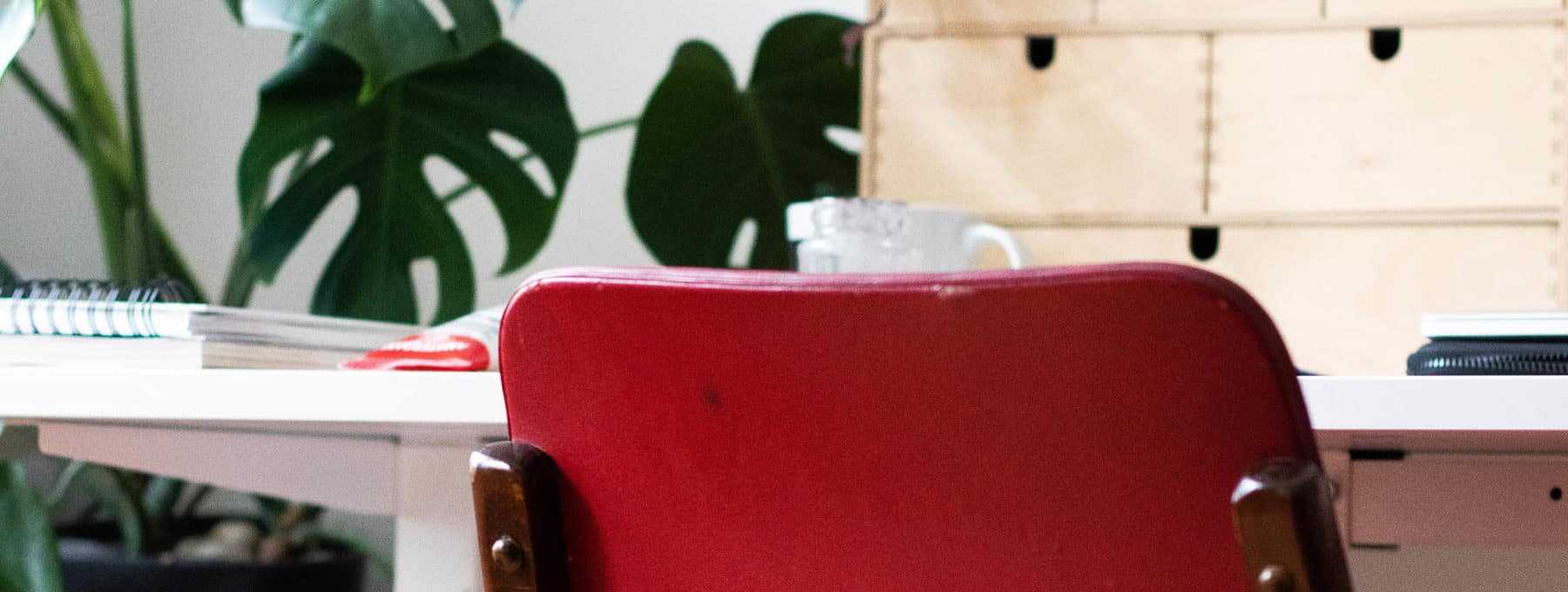
Your Career• 3 Min read
6th September 2020
Creative Homework Ideas
How can you create homework assignments that build on the day’s lessons and encourage creative, student-led learning? It’s a challenge for most teachers, especially as motivating pupils to complete homework can add a whole extra layer to your lesson plans. But it’s essential to bridge the gap between teacher and student learning – the skills gained through independent study reinforces knowledge from your class, as well as a host of other benefits:
- Extended learning time – outside of the constraints of the school day, students are free to learn at their own pace and in their own environment.
- Independent learning – vital skills for exam preparation and higher education
- Teaches students to be resourceful and to overcome challenges independently.
- Gives students the freedom to be creative in their learning, gain valuable problem-solving skills and confidence in their own abilities.
Tips For Setting Creative Homework
- Plan independent learning both in and out of the classroom – you can monitor students effectiveness and address issues that may arise in the classroom before they become problematic for pupils at home.
- Don’t leave homework assignment to the end of the lesson, rushing through the task might leave some students confused which inevitably leads to a lower homework completion rate. Write plenty of time for explaining homework assignments into your lesson planning – read our Beginner’s Guide To Lesson Planning here
- Homework should to not too easy nor not too hard, offering pupils a challenge that reinforced the topics learnt during the day
- Give room for creative expression – allowing students to add their own diagrams, decorations or chose their own project topics from a selection.
- Try using peer or self-assessment to mark homework – a double whammy of reducing your workload and allowing pupils to take control of their own learning.
- Include timings and explicit steps for completing more complicated assignments, especially for pupils that you anticipate might struggle. Comprehension of the task is the biggest hurdle in getting pupils to work on an independent basis.
- Self-driven projects, posters, creative tasks and research are more exciting than standard comprehension tasks and might encourage pupils that find sitting and writing dull or hard to complete the homework set – give students the freedom to learn and be creative in their home study.
- Provide specific instructions and internet safety reminders for research-led assignments. It’s very easy for children to find research overwhelming with a vast amount of information available online. Provide suggested websites and links in your homework to keep things on track!
- Don’t introduce a new topic for homework – keep it to topics that you’ve already covered in class
- Taking note of the subjects that excite and engage your class and set homework accordingly – try keeping dryer topics and for the classroom so that you can monitor engagement
- Mark work promptly – essential to keep students motivated to complete work in their own time!
- Offering students the opportunity to select the homework that they would like to do from a selection guarantees a higher rate of completion. We’ve seen some teachers create grids or sheets of homework assignments for the pupils to select, or offer baskets of activities for younger children to take home and complete with an adult.
Creative Homework Ideas For All Ages
Coming up with innovative ways for students to reinforce their knowledge at home can be difficult – many of these ideas would be suitable for lots of subjects with a little tweaking!
Book a CCS Consultation
Our East Anglia team are on hand to support your school or MAT with bespoke recruitment solutions, arrange a consultation with the team today.
Recommended for you
Pride month in the classroom.
As June is Pride Month, we’re taking the opportunity to look at...
- Your Career
Outdoor Lesson Ideas for Teachers
British summer has begun and with the weather warming up, it is...
What is the UK Graduate Visa?
What is a Graduate Visa? A graduate visa is a post-study visa...
You're now visiting Engage Education, United Kingdom
Take a look at some of the fantastic opportunities we’re currently recruiting for in the UK.
Privacy Overview
Teach Starter, part of Tes Teach Starter, part of Tes
Search everything in all resources
10 Helpful Homework Ideas and Tips for Primary School Teachers

Written by Holly (Teach Starter)
Homework ideas… Yep, I’m going there! It is always a hot topic of debate between everyone involved in the education field. Here at Teach Starter , we want to help you ensure that the homework you set meaningful and manageable for your students, their parents and yourself! Deciding on how to set homework, or whether to set homework at all, can be hard when there are so many different opinions and factors pushing and pulling against it.
Parents, either love it or hate it! Principals and leadership teams, either love it or hate it! Teachers are usually the ones stuck in the middle, trying to balance these external pressures with their own beliefs about homework and what is best for the children in their class. We know that it can be a tricky position to be in…
It’s very easy for teachers and schools to say, the research states that homework is not beneficial so no work will be going home! However, there are definitely aspects of the ‘homework’ concept that are beneficial to children and their parents. This blog will outline some helpful homework ideas and concepts that are suitable for primary teachers.
Homework Ideas for Teachers
Here you’ll find practical ideas, homework activities and printable resources. This collection of homework ideas will help you to send your students home with tailored homework activities that will be beneficial to their learning, reinforcing and practising the skills and knowledge they are currently exploring in class. They are homework activities that will help to inform you about student understanding and ensure that students experience success and a degree of independence, which is so great for their confidence as young learners!
Reading is Essential
Reading for homework each night is a no-brainer! All children should be given the opportunity to take home something to read. This means weekly readers for lower years students to read with their parents and a library book or another appropriate book from home for middle and upper years students.
When I was teaching in the lower years, I provided the students in my class with a homework activity sheet, home readers and sight words at their level. I would always reinforce with parents that if only one thing gets done in the after school chaos that I now know (having school-aged children myself), it’s reading! Reading was always the highest priority.
I found that if students were held accountable for their reading by having to log each time they read with a parent, they were more inclined to do it. Middle and upper years students may also benefit from maintaining a home reading log. Check out our Home Reading Journal to send home with your students.
Homework Apps
In this day and age, most children will have access to either a home computer or an iPad.
Why not encourage your children to practise their maths and reading skills at home, using apps that they are already exposed to in your classroom?
Mathletics for Homework
Mathletics is a web-based homework scheme that a lot of primary schools are utilising. This app empowers classroom teachers to set activities for homework which their students must complete before students can then go on to choose their own activities. This enables the teachers to set mathematics tasks that are suitable to each students level of ability which is so important when it comes to setting meaningful homework.
Reading Eggs
More and more Australian schools are adopting the use of the Reading Eggs scheme as a homework option. The multi-award winning online reading program for school students has been designed by Australian literacy experts and makes learning essential reading and phonics skills easy and fun. The online reading lessons, activities and books are sequenced to ensure students are working at their level!
Homework Activity Baskets
This idea came to me after writing about English rotations and Mathematics rotations for other blog posts. Why not create a similar concept, but for homework activities? Yes, it would take some time to collate the activities and set up them up, but what a fantastic way to engage your students in levelled homework activities!
- Firstly, divide your class into smaller ability groups, 3 or 4 groups would work. Each group can be given their own coloured homework basket.
- You then fill the coloured homework baskets with activities, games and task cards that the students can take home and play with parents, carers or older siblings throughout the week.
- Each Monday, students return the activity they had for the previous week and choose another one.
Check out our homework basket activities collection for a range of great hands-on activities that would suit this style of homework set up.
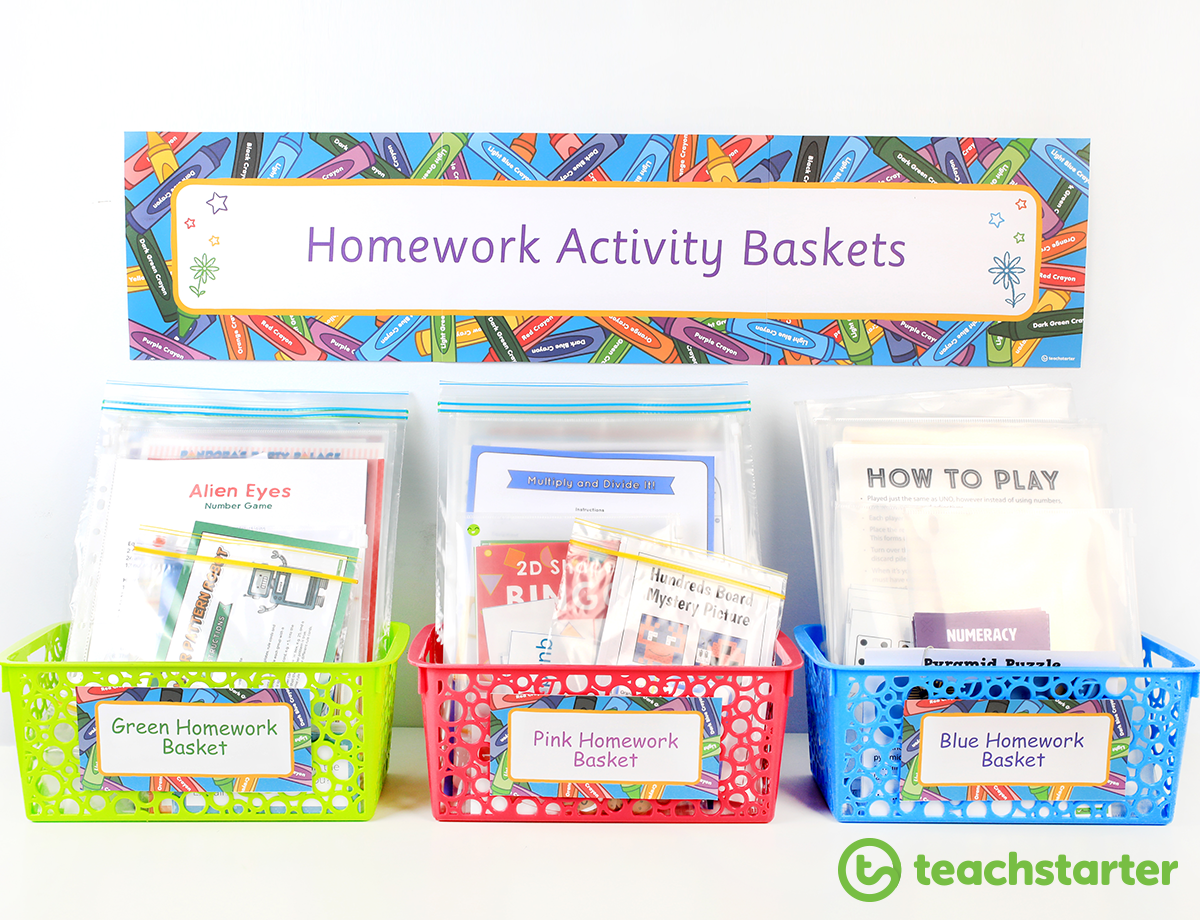
Homework Grids
Homework grids have been around for a number of years now! This is a fantastic concept that can usually take a lot of time for teachers to plan and set up…
Editable Curriculum Aligned Homework Grids
Well, we have done the hard work for you! Check out our editable homework grids, each with matching activities that link with the Australian Curriculum for every year level.

[resource:570495][resource:570434][resource:569573][resource:569791][resource:569921][resource:569948][resource:22819][resource:51876]
Editable Spelling Activity Grids
Our editable spelling activity grids are another fantastic way for students to engage with their spelling words without simply writing them out on a piece of paper or rote learning them.

Homework Folders
Creating homework folders for your students to keep their important homework information in is a fantastic way to encourage a sense of ownership and develop their independence.
Below is an example of what you might like to include in a lower years homework folder including a ring of sight words for students to practise at home.
Middle and upper years homework folders may include their homework grid, reading log and other relevant learning prompts such as editing guidelines, generic comprehension questions, times tables and grammar and punctuation reminders.

Homework Task Cards
Sending home a challenge or a task card with one activity for students to do that week is another way to engage kids in a meaningful task that they can complete with their family members.
We have a range of task cards that could suit this homework style and make great additions to the levelled homework baskets described above.
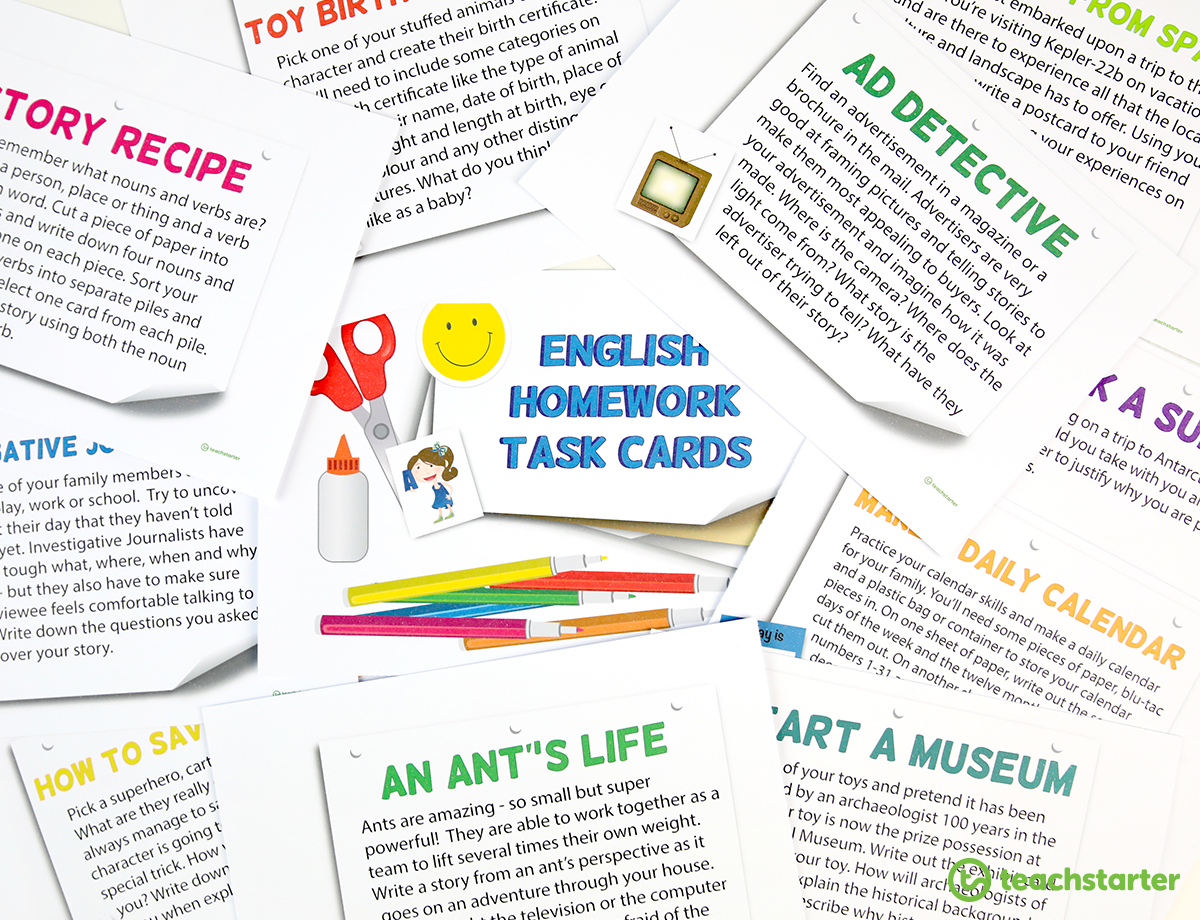
[resource:11970][resource:11855][resource:18490][resource:17462]
Create Homework Booklets Using Teach Starter Widgets
Tailored activities aside, if the above homework ideas don’t really suit what you need for your class and a traditional homework booklet/worksheet is something that you would prefer, we do have a few options that suit your needs! Our Maths Mentals widget can be used to create weekly maths questions for specific year levels. These are a great way for students to practise their all-important mental maths in a homework booklet style.
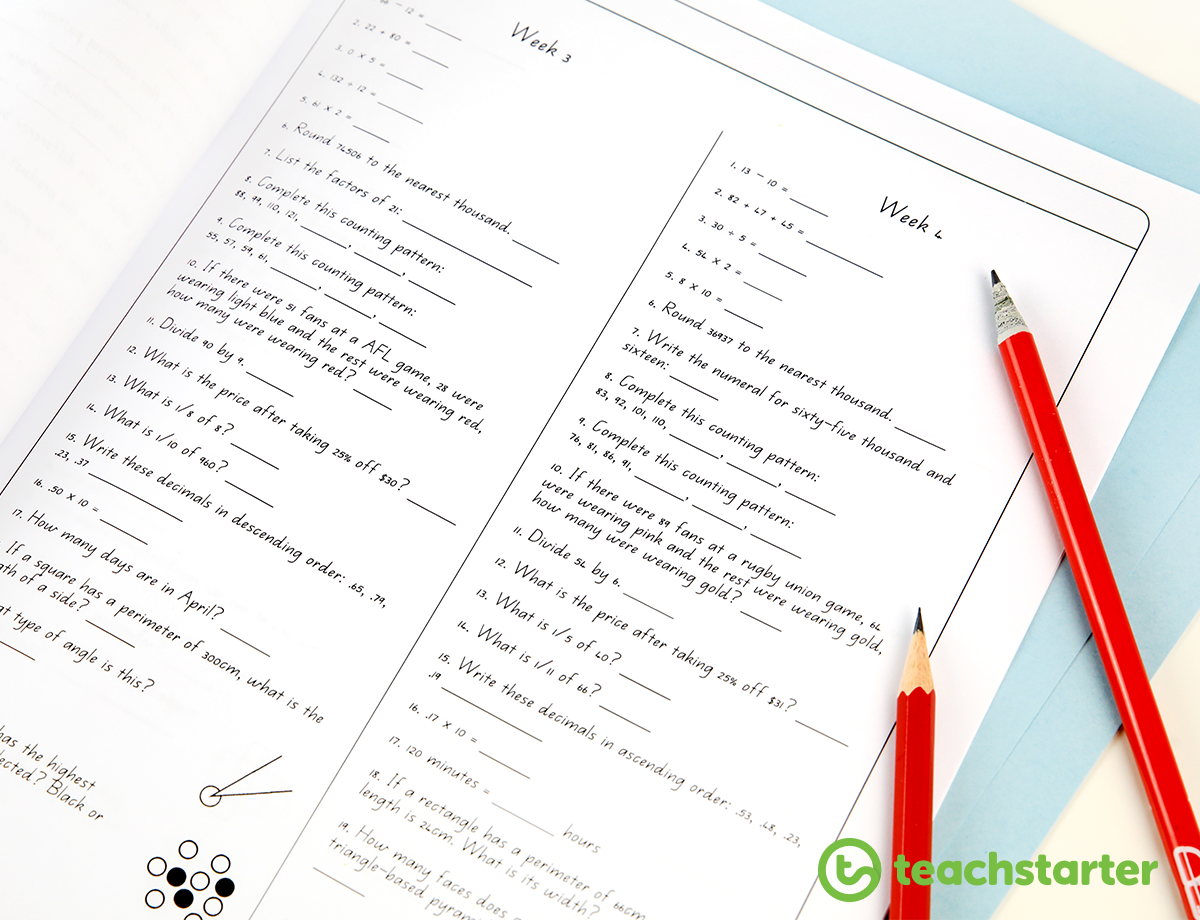
Communicate to Parents
Sending home a homework information sheet.
After deciding how your homework will look in your classroom, it is important that you communicate this to the parents of your students, especially in the early years. Sending home an information sheet at the beginning of the year will empower your students’ parents and carers, helping them to feel comfortable with how the year will look and what they can expect to be doing with their kids at home.
You may like to use our Editable Homework Information Sheet to give you an idea of what information to send home to parents.

Include Homework Information in Classroom Newsletters
Another way to communicate to parents is by sending home weekly classroom newsletters. Although this seems like a lot of work, once you have the template ready to go, it really doesn’t take long to fill in the bits of information for the week.
By including a simple homework task in your classroom newsletter, you can steer away from the traditional homework sheet, instead providing a relevant and engaging task for your students to complete that week.
You may even wish to set up a show and tell timetable for the students to present their findings or talk about their experiences from homework task each week. This also encourages them to talk in front of the peers and gives you more opportunities to sort out that speaking mark for report cards!
Use our editable classroom newsletter which is available in colour and black and white.
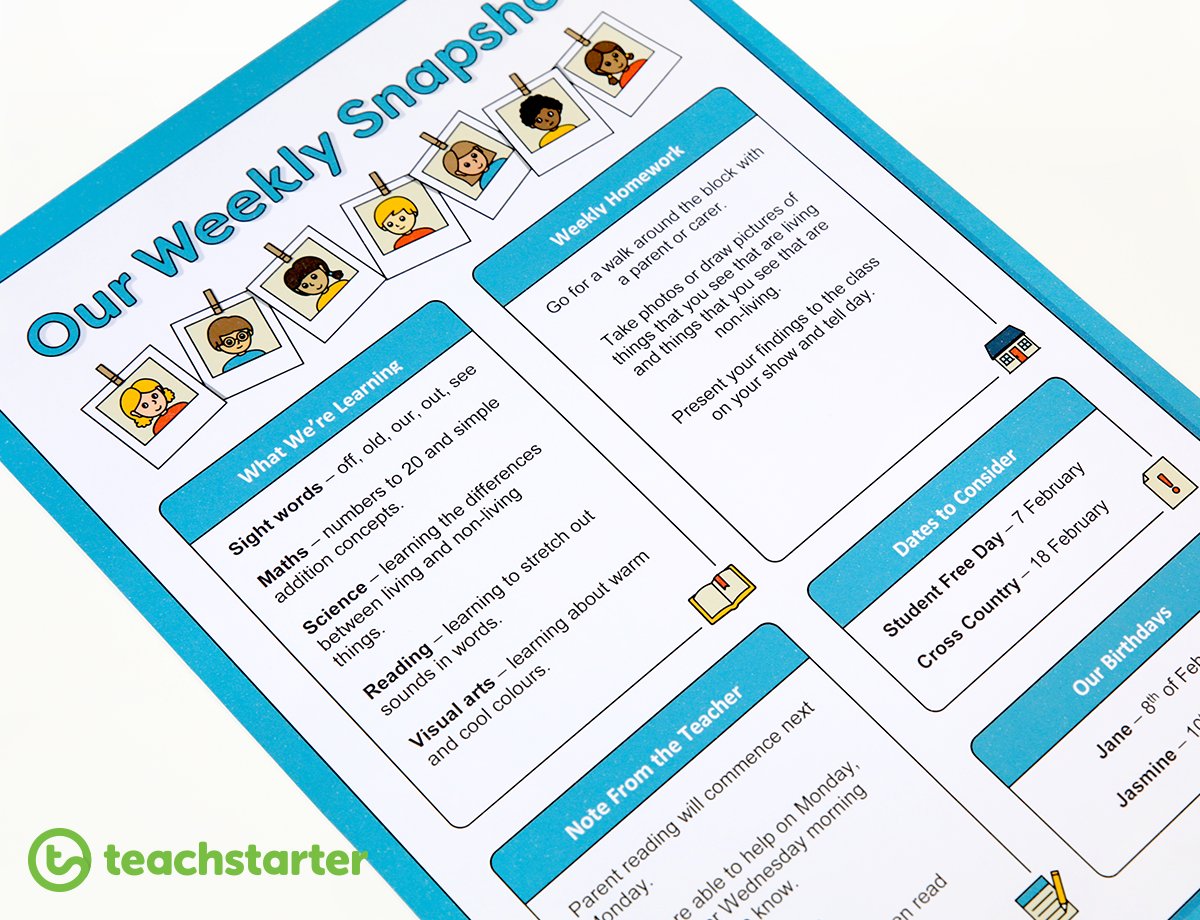
Do you prefer traditional homework styles or new concepts?
Let us know in the comments section of this blog..

30 Buzzing Facts About Bees to Excite Kids About Nature
Everyone benefits from the busyness of bees which is why these bee facts will help inspire your students to appreciate and protect them!
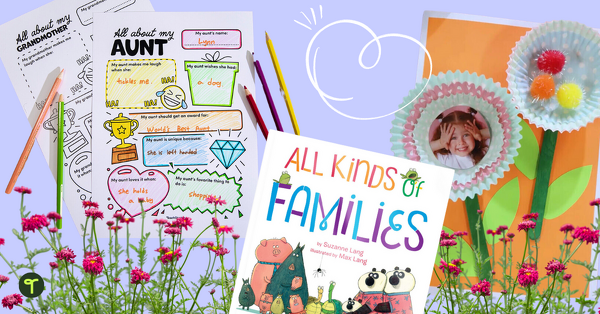

6 Inclusive Mother's Day and Father's Day Ideas for the Primary Classroom
Use these ideas to make Mother's Day gifts and Father's Day classroom celebrations more inclusive for your students.
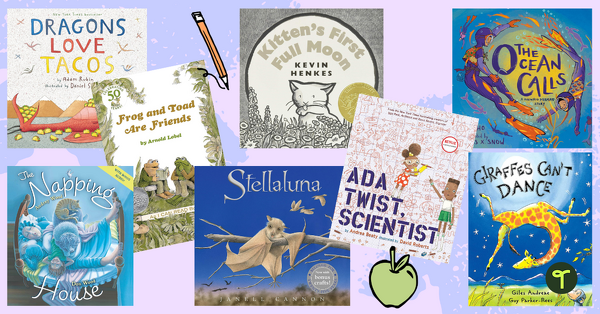
70 Best Books for Year 1 to Add to Your Classroom Reading Corner
Wondering which books for year 1 you should add to your classroom reading corner? Look no further! We have a list of 70 that are teacher (and student) approved!

28 Fun Facts About Australia to Explore With Your Primary Students
Share these fun facts about Australia with your primary school students and explore our teacher team's tips to use the facts in your lesson plans.
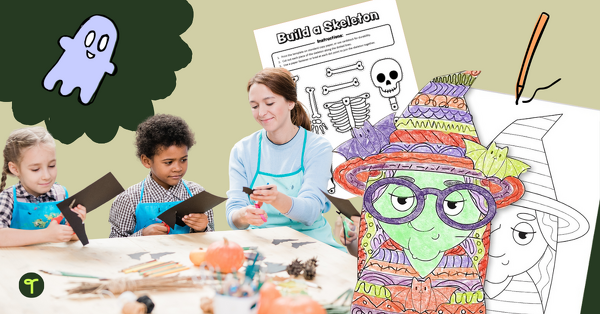
12 Easy Halloween Drawings for Kids to Try in Your Classroom This Holiday
Explore easy Halloween drawings for kids that are perfect for the classroom. Take a peek at this teacher-created list for plenty of fresh ideas!

20 Fun Facts About Mars to Get Kids Excited About Your Space Lessons
Add these fun facts about Mars to your lesson plans — plus see our teacher team's favourite ways to use them in classroom activities.
11 Comments
Yes Sarah. LOVE IT!!!
Would love there to be a button here where I can download all the resources at once rather than go into each activity and download it separately.
Hi Sarah, This is an awesome idea and we are discussing ways to implement this for our future blog posts. We really appreciate your feedback. If there is anything else I can assist you with, please don't hesitate to contact me.
Get more inspiration delivered to your inbox!
Sign up for a free membership and receive tips, news and resources directly to your email!
- Our Mission

What’s the Right Amount of Homework?
Decades of research show that homework has some benefits, especially for students in middle and high school—but there are risks to assigning too much.
Many teachers and parents believe that homework helps students build study skills and review concepts learned in class. Others see homework as disruptive and unnecessary, leading to burnout and turning kids off to school. Decades of research show that the issue is more nuanced and complex than most people think: Homework is beneficial, but only to a degree. Students in high school gain the most, while younger kids benefit much less.
The National PTA and the National Education Association support the “ 10-minute homework guideline ”—a nightly 10 minutes of homework per grade level. But many teachers and parents are quick to point out that what matters is the quality of the homework assigned and how well it meets students’ needs, not the amount of time spent on it.
The guideline doesn’t account for students who may need to spend more—or less—time on assignments. In class, teachers can make adjustments to support struggling students, but at home, an assignment that takes one student 30 minutes to complete may take another twice as much time—often for reasons beyond their control. And homework can widen the achievement gap, putting students from low-income households and students with learning disabilities at a disadvantage.
However, the 10-minute guideline is useful in setting a limit: When kids spend too much time on homework, there are real consequences to consider.
Small Benefits for Elementary Students
As young children begin school, the focus should be on cultivating a love of learning, and assigning too much homework can undermine that goal. And young students often don’t have the study skills to benefit fully from homework, so it may be a poor use of time (Cooper, 1989 ; Cooper et al., 2006 ; Marzano & Pickering, 2007 ). A more effective activity may be nightly reading, especially if parents are involved. The benefits of reading are clear: If students aren’t proficient readers by the end of third grade, they’re less likely to succeed academically and graduate from high school (Fiester, 2013 ).
For second-grade teacher Jacqueline Fiorentino, the minor benefits of homework did not outweigh the potential drawback of turning young children against school at an early age, so she experimented with dropping mandatory homework. “Something surprising happened: They started doing more work at home,” Fiorentino writes . “This inspiring group of 8-year-olds used their newfound free time to explore subjects and topics of interest to them.” She encouraged her students to read at home and offered optional homework to extend classroom lessons and help them review material.
Moderate Benefits for Middle School Students
As students mature and develop the study skills necessary to delve deeply into a topic—and to retain what they learn—they also benefit more from homework. Nightly assignments can help prepare them for scholarly work, and research shows that homework can have moderate benefits for middle school students (Cooper et al., 2006 ). Recent research also shows that online math homework, which can be designed to adapt to students’ levels of understanding, can significantly boost test scores (Roschelle et al., 2016 ).
There are risks to assigning too much, however: A 2015 study found that when middle school students were assigned more than 90 to 100 minutes of daily homework, their math and science test scores began to decline (Fernández-Alonso, Suárez-Álvarez, & Muñiz, 2015 ). Crossing that upper limit can drain student motivation and focus. The researchers recommend that “homework should present a certain level of challenge or difficulty, without being so challenging that it discourages effort.” Teachers should avoid low-effort, repetitive assignments, and assign homework “with the aim of instilling work habits and promoting autonomous, self-directed learning.”
In other words, it’s the quality of homework that matters, not the quantity. Brian Sztabnik, a veteran middle and high school English teacher, suggests that teachers take a step back and ask themselves these five questions :
- How long will it take to complete?
- Have all learners been considered?
- Will an assignment encourage future success?
- Will an assignment place material in a context the classroom cannot?
- Does an assignment offer support when a teacher is not there?
More Benefits for High School Students, but Risks as Well
By the time they reach high school, students should be well on their way to becoming independent learners, so homework does provide a boost to learning at this age, as long as it isn’t overwhelming (Cooper et al., 2006 ; Marzano & Pickering, 2007 ). When students spend too much time on homework—more than two hours each night—it takes up valuable time to rest and spend time with family and friends. A 2013 study found that high school students can experience serious mental and physical health problems, from higher stress levels to sleep deprivation, when assigned too much homework (Galloway, Conner, & Pope, 2013 ).
Homework in high school should always relate to the lesson and be doable without any assistance, and feedback should be clear and explicit.
Teachers should also keep in mind that not all students have equal opportunities to finish their homework at home, so incomplete homework may not be a true reflection of their learning—it may be more a result of issues they face outside of school. They may be hindered by issues such as lack of a quiet space at home, resources such as a computer or broadband connectivity, or parental support (OECD, 2014 ). In such cases, giving low homework scores may be unfair.
Since the quantities of time discussed here are totals, teachers in middle and high school should be aware of how much homework other teachers are assigning. It may seem reasonable to assign 30 minutes of daily homework, but across six subjects, that’s three hours—far above a reasonable amount even for a high school senior. Psychologist Maurice Elias sees this as a common mistake: Individual teachers create homework policies that in aggregate can overwhelm students. He suggests that teachers work together to develop a school-wide homework policy and make it a key topic of back-to-school night and the first parent-teacher conferences of the school year.
Parents Play a Key Role
Homework can be a powerful tool to help parents become more involved in their child’s learning (Walker et al., 2004 ). It can provide insights into a child’s strengths and interests, and can also encourage conversations about a child’s life at school. If a parent has positive attitudes toward homework, their children are more likely to share those same values, promoting academic success.
But it’s also possible for parents to be overbearing, putting too much emphasis on test scores or grades, which can be disruptive for children (Madjar, Shklar, & Moshe, 2015 ). Parents should avoid being overly intrusive or controlling—students report feeling less motivated to learn when they don’t have enough space and autonomy to do their homework (Orkin, May, & Wolf, 2017 ; Patall, Cooper, & Robinson, 2008 ; Silinskas & Kikas, 2017 ). So while homework can encourage parents to be more involved with their kids, it’s important to not make it a source of conflict.

Creative Homework Ideas
Learn Bright Lessons include many creative ideas for classroom instruction and student learning. Students are asked to work independently or with their peers, fostering their collaboration skills. Of course, the lessons also include many traditional learning exercises. Such as, multiple-choice questions, matching, fill in the blank responses, and others. Since every school and classroom is different, any lesson used with students can be adapted.
Whether you are assigning homework based on Learn Bright lessons or your own school’s curriculum, the homework you assign is essential for learning. Some schools across the country have banned assigning homework to students while others limit the amount each night. If you do assign homework, there are several creative ideas you can use that will motivate your students to complete the homework you assign.
Creative hands-on learning activities and other similar learning ideas in the classroom are quite effective. They can be just as effective at home as well for a wide variety of subjects and assignments. In every student’s home, there is “stuff” and other resources that can be accessed to help students review a concept taught at school. Here are a few samples for different subjects:
MATH – Multiplication Facts
Students use the numbers that appear on product labels and multiply them together. Not only do they get multiplication practice, but they may also be introduced to a food label in a new way. It encourages the students to read food and other product labels. In this way, they can relate what they learn in class to the real world. Showing them when they will use these concepts in their everyday lives.
SCIENCE – Solids, Liquids, Gases
Students conduct a home or neighborhood search for items that are solids, liquids, or gases. For example, they can open the refrigerator and list milk, juice, and other beverages as liquids. The containers, butter, veggies, and more as solids. Carbonated drinks can be listed as containing gas. You can ask them later about eggs or Jell-O and other items that may be both solid and liquid. This reinforces their learning by allowing them to explore and use their creativity to complete the assignment.
SOCIAL STUDIES – Older Adult Interviews
Students may be studying topics in history from the past 50 to 100 years. With this exercise, they interview an older adult who lived through the event that they are studying. They obtain opinions and feelings related to the event. They also confirm (or dispute) facts the students have been taught. Finally, they discuss how the person was affected by the event. This gives them a deeper understanding of that event and shows them the value of primary sources.
LANGUAGE ARTS – Parts of Speech Search
Students practice identifying the seven parts of speech while at home. They do this by listing examples that are used during family conversations or those words found on product labels.
Describing Things
Students use each of the five senses to write descriptive sentences related to things at home or in the neighborhood. The aroma of dinner, the sound of cars passing on the street, the sight of moving tree branches, the feel of a parent’s hug, or the taste of a spicy meal. This allows them to connect the lesson to the real world. It allows them to think about their surroundings in a new and interesting way.
READING – Read and React
Students are asked to read aloud a passage from their favorite story or novel. Next, they ask family members or close neighbors for their reactions and opinions about a character/event from the passage. Students record the information and discuss it with the listener. This illustrates that different people may notice different things while reading. It gives the student a chance to practice discussing literature from a young age.
MUSIC – Favorite Music
Students will listen to a parent or other family member’s favorite genre of music. Then, list the instruments they hear, share their opinions of the sound, and discuss other artists from a particular era. This encourages them to engage with the music on a level they normally would not.
ART – Art Critic
Nearly all homes include some type of painting, picture, or sculpture on display. Students take a photo of an art piece in their home and share their opinion of the art piece with a family member. They can discuss the age of the work of art, how it adds to the room’s décor, why it’s significant to their family, and more. Students will gain valuable practice analyzing images and thinking about art with this homework assignment.
HEALTH – Food Search
The students conduct a food search, identifying healthy versus unhealthy foods. Next, they list reasons why they may be considered healthy or unhealthy, and reviewing food labels. This teaches students to think about what they eat. Hence giving them a fun and interactive activity to do for homework.
There are many, many more creative homework ideas you can use for at-home assignments for your students. Think outside the box when assigning homework. Practice incorporating interactive elements so that students aren’t just sitting at their desk. Try to create and develop assignments that kids will want to do. Avoid the assignments that kids simply have to do. Think of the real-world applications for your lesson material as inspiration and build your homework assignments around that. Creative homework assignments can be fun and, at the same time, teach and enhance subjects introduced in the classroom.
For more creative homework ideas, be sure to check out our lesson plans and YouTube videos!
Previous Post Creating a Classroom Newsletter
Next post building connection with students, related posts.

Gifts That Make the Grade: Teacher Appreciation Week Ideas

- Lesson Plans
- For Teachers
© 2024 Learn Bright. All rights reserved. Terms and Conditions. Privacy Policy.
- Sign Up for Free
- Linguistics
Designing a Stratified English Homework in Primary Schools under the Concept of Double Reduction
- October 2022
- IRA International Journal of Education and Multidisciplinary Studies 18(4):9
- This person is not on ResearchGate, or hasn't claimed this research yet.
Discover the world's research
- 25+ million members
- 160+ million publication pages
- 2.3+ billion citations
- Weijia Chen
- Chunming Wu
- Yanhong Zeng
- Chen Hongbo
- Cheng Xiaolin
- Hao Taoliang
- Huang Hanqing
- Huang Yidan
- Tang Kaiming
- Recruit researchers
- Join for free
- Login Email Tip: Most researchers use their institutional email address as their ResearchGate login Password Forgot password? Keep me logged in Log in or Continue with Google Welcome back! Please log in. Email · Hint Tip: Most researchers use their institutional email address as their ResearchGate login Password Forgot password? Keep me logged in Log in or Continue with Google No account? Sign up
The effect of micro gamified online homework on gameful experience, intrinsic motivation, engagement, and cognitive load
- Published: 13 June 2024
Cite this article

- Ahmed Hosny Saleh Metwally ORCID: orcid.org/0000-0002-9545-5870 1 ,
- Ronghuai Huang ORCID: orcid.org/0000-0003-4651-5248 1 ,
- Paula Toledo Palomino ORCID: orcid.org/0000-0002-9730-2253 2 &
- Ahmed Mohamed Fahmy Yousef ORCID: orcid.org/0000-0003-0522-0734 3
30 Accesses
Explore all metrics
Gamifying online homework activities and learning assignments is an effective approach to facilitate students' engagement and enjoyment. While incorporating game elements to gamify homework and learning assignments promoted positive psychological and learning outcomes, the mere use of these elements brings several flaws associated with the gameful design that constrains the perceived gameful experience and increases the cognitive load of students during homework achievement. This research demonstrates the micro design as an innovative approach to gamify homework assignments and investigates its effects on perceived gameful experience, intrinsic motivation, engagement, and cognitive load. Forty-three primary school students were randomly divided into two groups, i.e., experimental and control groups. The experimental group with the micro gameful design of homework activities and the control group with conventional gameful design. The results provided empirical evidence on the impact of gamifying online homework while there are no significant differences between the groups on gameful experience, motivation, and engagement. The micro design approach is effective for reducing the cognitive load of students when accomplishing homework tasks. The current data highlight the importance of enhancing the gameful design approaches and patterns when gamifying learning assignments and developing motivational cognitive affordances that promote behaviour change and task completion.
This is a preview of subscription content, log in via an institution to check access.
Access this article
Price includes VAT (Russian Federation)
Instant access to the full article PDF.
Rent this article via DeepDyve
Institutional subscriptions

Similar content being viewed by others

Towards a Unified Model of Gamification and Motivation

Why Gamification Fails in Education and How to Make It Successful: Introducing Nine Gamification Heuristics Based on Self-Determination Theory

The effects of personalized gamification on students’ flow experience, motivation, and enjoyment
Data availability.
The data that support the findings of this study are available on request from the corresponding author.
Agrawal, R., Imieliński, T., & Swami, A. (1993). Mining association rules between sets of items in large databases. ACM SIGMOD Record . https://doi.org/10.1145/170036.170072
Albertazzi, D., Ferreira, M. G. G., & Forcellini, F. A. (2019). A Wide View on Gamification. Technology, Knowledge and Learning, 24 (2), 191–202. https://doi.org/10.1007/s10758-018-9374-z
Article Google Scholar
Armier, D. D., Shepherd, C. E., & Skrabut, S. (2016). Using Game Elements to Increase Student Engagement in Course Assignments. College Teaching, 64 (2), 64–72. https://doi.org/10.1080/87567555.2015.1094439
Bai, S., Hew, K. F., & Huang, B. (2020). Does gamification improve student learning outcome? Evidence from a meta-analysis and synthesis of qualitative data in educational contexts. Educational Research Review, 30 , 100322. https://doi.org/10.1016/j.edurev.2020.100322
Bonham, S., Beichner, R., & Deardorff, D. (2001). Online homework: Does it make a difference? The Physics Teacher, 39 (5), 293–296. https://doi.org/10.1119/1.1375468
Chang, C.-C., Liang, C., Chou, P.-N., & Lin, G.-Y. (2017). Is game-based learning better in flow experience and various types of cognitive load than non-game-based learning? Perspective from multimedia and media richness. Computers in Human Behavior, 71 , 218–227.
Chee, C. M., & Ten Wong, D. H. (2017). Affluent Gaming Experience Could Fail Gamification in Education: A Review. IETE Technical Review, 34 (6), 593–597. https://doi.org/10.1080/02564602.2017.1315965
Chen, Y., Zhang, L., & Mao, C. (2022a). Investigating Chinese College Students’ Cognitive Load in a Gamified Foreign Language Class: A Pilot Study. In Proceedings of the 5th International Conference on Big Data and Education , 217–221. https://doi.org/10.1145/3524383.3524447
Chen, Y., Zhang, L., & Yin, H. (2022b). A Longitudinal Study on Students’ Foreign Language Anxiety and Cognitive Load in Gamified Classes of Higher Education. Sustainability, 14 (17), 10905.
Cheng, K. K., Thacker, B. A., Cardenas, R. L., & Crouch, C. (2004). Using an online homework system enhances students’ learning of physics concepts in an introductory physics course. American Journal of Physics, 72 (11), 1447–1453.
Cohen, J. (1988). Statistical power analysis for the behavioural science (2nd ed.). Erlbaum.
Google Scholar
Da Rocha Seixas, L., Gomes, A. S., & De Melo Filho, I. J. (2016). Effectiveness of gamification in the engagement of students. Computers in Human Behavior, 58 , 48–63. https://doi.org/10.1016/j.chb.2015.11.021
Dehghanzadeh, H., Fardanesh, H., Hatami, J., Talaee, E., & Noroozi, O. (2019). Using gamification to support learning English as a second language: A systematic review. Computer Assisted Language Learning , 1–24. https://doi.org/10.1080/09588221.2019.1648298
Dehghanzadeh, H., Farrokhnia, M., Dehghanzadeh, H., Taghipour, K., & Noroozi, O. (2024). Using gamification to support learning in K-12 education: A systematic literature review. British Journal of Educational Technology, 55 (1), 34–70. https://doi.org/10.1111/bjet.1333
Deterding, S. (2015). The lens of intrinsic skill atoms: A method for gameful design. Human-Computer Interaction, 30 (3–4), 294–335. https://doi.org/10.1080/07370024.2014.993471
Deterding, S., Dixon, D., Khaled, R., & Nacke, L. (2011). From game design elements to gamefulness: Defining “gamification.” Proceedings of the 15th International Academic MindTrek Conference: Envisioning Future Media Environments , 9–15. https://doi.org/10.1145/2181037.2181040
Dichev, C., & Dicheva, D. (2017). Gamifying education: What is known, what is believed and what remains uncertain: A critical review. International Journal of Educational Technology in Higher Education , 14 (9). https://doi.org/10.1186/s41239-017-0042-5
Dichev, C., Dicheva, D., Angelova, G., & Agre, G. (2014). From gamification to gameful design and gameful experience in learning. Cybernetics and Information Technologies, 14 (4), 80–100. https://doi.org/10.1515/cait-2014-0007
Douligeris, C., Seralidou, E., & Gkotsiopoulos, P. (2018). Let’s learn with Kahoot! 2018 IEEE Global Engineering Education Conference (EDUCON) , 677–685. https://ieeexplore.ieee.org/abstract/document/8363296
Eppmann, R., Bekk, M., & Klein, K. (2018). Gameful Experience in Gamification: Construction and Validation of a Gameful Experience Scale [GAMEX]. Journal of Interactive Marketing, 43 , 98–115. https://doi.org/10.1016/j.intmar.2018.03.002
Fatmawati, O. A. (2021). Does kahoot challenge mode motivate students’ better than google form in doing online homework? LinguA-LiterA: Journal of English Language Teaching Learning and Literature , 4 (2), 15–27.
Freasier, B., Collins, G., & Newitt, P. (2003). A Web-Based Interactive Homework Quiz and Tutorial Package To Motivate Undergraduate Chemistry Students and Improve Learning. Journal of Chemical Education, 80 (11), 1344. https://doi.org/10.1021/ed080p1344
Galloway, M., Conner, J., & Pope, D. (2013). Nonacademic effects of homework in privileged, high-performing high schools. Journal of Experimental Education, 81 (4), 490–510. https://doi.org/10.1080/00220973.2012.745469
Garone, P., & Nesteriuk, S. (2019). Gamification and Learning: A Comparative Study of Design Frameworks. Lecture Notes in Computer Science (Including Subseries Lecture Notes in Artificial Intelligence and Lecture Notes in Bioinformatics) , 11582 LNCS , 473–487. https://doi.org/10.1007/978-3-030-22219-2_35
Ghai, A., & Tandon, U. (2023). Integrating gamification and instructional design to enhance usability of online learning. Education and Information Technologies, 28 (2), 2187–2206. https://doi.org/10.1007/s10639-022-11202-5
Goehle, G. (2013). Gamification and Web-based Homework. PRIMUS: Problems, Resources, and Issues in Mathematics Undergraduate Studies , 23 (3), 234–246. https://doi.org/10.1080/10511970.2012.736451
Goehle, G., & Wagaman, J. (2015). The Impact of Gamification in Web Based Homework. PRIMUS: Problems, Resources, and Issues in Mathematics Undergraduate Studies , 26 (6), 557–569. https://doi.org/10.1080/10511970.2015.1122690
Gribbons, B., & Herman, J. (1996). True and Quasi-Experimental Designs. Practical Assessment, Research, and Evaluation , 5 . https://doi.org/10.7275/fs4z-nb61
Hamari, J. (2019). Gamification. In The Blackwell Encyclopedia of Sociology (pp. 1–3). https://doi.org/10.1002/9781405165518.wbeos1321
Holman, C., Aguilar, S., & Fishman, B. (2013). GradeCraft: What can we learn from a game-inspired learning management system? ACM International Conference Proceeding Series. (pp. 60–264). https://doi.org/10.1145/2460296.2460350
Huang, B., & Hew, K. F. (2021). Using gamification to design courses. Educational Technology & Society, 24 (1), 44–63.
Hunicke, R., Leblanc, M., & Zubek, R. (2004). MDA: A formal approach to game design and game research. In Proceedings of the AAAI Workshop on Challenges in Game AI, 4 (1), 1–5.
Huotari, K., & Hamari, J. (2012). Defining gamification—A service marketing perspective. In Proceedings of the 16th International Academic MindTrek Conference , 17–22. https://doi.org/10.1145/2393132.2393137
Intrinsic Motivation Inventory (IMI). (2021). https://selfdeterminationtheory.org/intrinsic-motivation-inventory . Accessed Jan 2021.
Kim, J. T., & Lee, W. H. (2015). Dynamical model for gamification of learning (DMGL). Multimedia Tools and Applications, 74 (19), 8483–8493. https://doi.org/10.1007/s11042-013-1612-8
Koivisto, J., & Hamari, J. (2019). The rise of motivational information systems: A review of gamification research. International Journal of Information Management, 45 , 191–210. https://doi.org/10.1016/j.ijinfomgt.2018.10.013
Korkealehto, K., & Siklander, P. (2018). Enhancing engagement, enjoyment and learning experiences through gamification on an English course for health care students. Seminar.net , 14 (1), 13–30. https://doi.org/10.7577/seminar.2579
Kulhanek, A., Butler, B., & Bodnar, C. A. (2019). Motivating first-year engineering students through gamified homework. Educational Action Research , 1–26. https://doi.org/10.1080/09650792.2019.1635511
Landers, R. N. (2014). Developing a Theory of Gamified Learning: Linking Serious Games and Gamification of Learning. Simulation and Gaming, 45 (6), 752–768. https://doi.org/10.1177/1046878114563660
Landers, R. N., Tondello, G. F., Kappen, D. L., Collmus, A. B., Mekler, E. D., & Nacke, L. E. (2019). Defining gameful experience as a psychological state caused by gameplay: Replacing the term ‘Gamefulness’ with three distinct constructs. International Journal of Human Computer Studies, 127 , 81–94. https://doi.org/10.1016/j.ijhcs.2018.08.003
Leclercq, T., Poncin, I., & Hammedi, W. (2020). Opening the black box of gameful experience: Implications for gamification process design. Journal of Retailing and Consumer Services , 52 . https://doi.org/10.1016/j.jretconser.2019.07.007
Leppink, J., Paas, F., van Gog, T., van der Vleuten, C. P. M., & van Merriënboer, J. J. G. (2014). Effects of pairs of problems and examples on task performance and different types of cognitive load. Learning and Instruction, 30 , 32–42. https://doi.org/10.1016/j.learninstruc.2013.12.001
Liu, Y.-C., Wang, W.-T., & Huang, W.-H. (2023). The effects of game quality and cognitive loads on students’ learning performance in mobile game-based learning contexts: The case of system analysis education. Education and Information Technologies . https://doi.org/10.1007/s10639-023-11856-9
Locke, E. A., & Latham, G. P. (2002). Building a practically useful theory of goal setting and task motivation: A 35-year odyssey. American Psychologist, 57 (9), 705–717. https://doi.org/10.1037/0003-066X.57.9.705
Majuri, J., Koivisto, J., & Hamari, J. (2018). Gamification of education and learning: A review of empirical literature. In Proceedings of the 2nd International GamiFIN Conference , GamiFIN 2018, (pp. 11–19).
Manimaran, J., & Velmurugan, T. (2015). Analysing the quality of association rules by computing an interestingness measures. Indian Journal of Science and Technology . https://doi.org/10.17485/ijst/2015/v8i15/76693
Manzano-León, A., Camacho-Lazarraga, P., Guerrero, M. A., Guerrero-Puerta, L., Aguilar-Parra, J. M., Trigueros, R., & Alias, A. (2021). Between level up and game over: A systematic literature review of gamification in education. Sustainability, 13 (4), 2247. https://doi.org/10.3390/su13042247
Martí-Parreño, J., Seguí-Mas, D., & Seguí-Mas, E. (2016). Teachers’ Attitude towards and Actual Use of Gamification. Procedia - Social and Behavioral Sciences, 228 , 682–688. https://doi.org/10.1016/j.sbspro.2016.07.104
Mayer, R. E., & Moreno, R. (2003). Nine Ways to Reduce Cognitive Load in Multimedia Learning. Educational Psychologist, 38 (1), 43–52. https://doi.org/10.1207/S15326985EP3801_6
Mekler, E. D., Brühlmann, F., Opwis, K., & Tuch, A. N. (2013). Do points, levels and leaderboards harm intrinsic motivation? An empirical analysis of common gamification elements. ACM International Conference Proceeding Series , 66–73. https://doi.org/10.1145/2583008.2583017
Mekler, E. D., Brühlmann, F., Tuch, A. N., & Opwis, K. (2017). Towards understanding the effects of individual gamification elements on intrinsic motivation and performance. Computers in Human Behavior, 71 , 525–534. https://doi.org/10.1016/j.chb.2015.08.048
Metwally, A. H. S., Nacke, L. E., Chang, M., Wang, Y., & Yousef, A. M. F. (2021). Revealing the hotspots of educational gamification: An umbrella review. International Journal of Educational Research , 109 . https://doi.org/10.1016/j.ijer.2021.101832
Metwally, A. H. S., Yousef, A. M. F., & Yining, W. (2020a). Learning Analytics and Perceived Experience of Gamifying Homework Assignments. In Proceedings of the 12th International Conference on Computer Supported Education (CSEDU 2020) , 1 , (pp. 673–683). https://doi.org/10.5220/0009818606730683
Metwally, A. H. S., Yousef, A. M. F., & Yining, W. (2020b). Micro Design Approach for Gamifying Students’ Assignments. In 2020 IEEE 20th International Conference on Advanced Learning Technologies (ICALT) , (pp. 349–351). https://doi.org/10.1109/ICALT49669.2020.00112
Metwally, A. H. S., Yousef, A. M. F., & Yining, W. (2019). Investigating the effects of gamifying homework on students’ perceived satisfaction, behavioral intention and intrinsic motivation. In Proceedings of the 3rd International GamiFIN Conference , (pp. 47–57). http://ceur-ws.org/Vol-2359/paper5.pdf
Mora, A., Riera, D., Gonzalez, C., & Arnedo-Moreno, J. (2015a). A Literature Review of Gamification Design Frameworks. 2015 7th International Conference on Games and Virtual Worlds for Serious Applications (VS-Games) , September , 1–8. https://doi.org/10.1109/VS-GAMES.2015.7295760
Mora, A., Zaharias, P., González, C. S. G., & Arnedo-Moreno, J. (2015b). FRAGGLE: A FRamework for AGile gamification of learning experiences. International Conference on Games and Learning Alliance , 530–539. https://doi.org/10.1007/978-3-319-40216-1_57
Mora, A., Riera, D., González, C., & Arnedo-Moreno, J. (2017). Gamification: A systematic review of design frameworks. Journal of Computing in Higher Education, 29 (3), 516–548. https://doi.org/10.1007/s12528-017-9150-4
Nadi-Ravandi, S., & Batooli, Z. (2022). Gamification in education: A scientometric, content and co-occurrence analysis of systematic review and meta-analysis articles. Education and Information Technologies, 27 (7), 10207–10238.
Palomino, P. T., Toda, A. M., Oliveira, W., Cristea, A. I., & Isotani, S. (2019b). Narrative for Gamification in Education: Why Should you Care? In 2019 IEEE 19th International Conference on Advanced Learning Technologies (ICALT) , (pp. 97–99). https://doi.org/10.1109/ICALT.2019.00035
Putri Septiani, A., & Rosmansyah, Y. (2021). Features, frameworks, and benefits of gamified microlearning: A systematic literature review. ACM International Conference Proceeding Series , 130–135. https://doi.org/10.1145/3468978.3469000
Putz, L. M., Hofbauer, F., & Treiblmaier, H. (2020). Can gamification help to improve education? Findings from a longitudinal study. Computers in Human Behavior, 110 , 106392. https://doi.org/10.1016/j.chb.2020.106392
Qiao, S., Yeung, S. S. sze, Zainuddin, Z., Ng, D. T. K., & Chu, S. K. W. (2022). Examining the effects of mixed and non-digital gamification on students’ learning performance, cognitive engagement and course satisfaction. British Journal of Educational Technology , February , 1–20. https://doi.org/10.1111/bjet.13249
Richards-Babb, M., Drelick, J., Henry, Z., & Robertson-Honecker, J. (2011). Online Homework, Help or Hindrance? What Students Think and How They Perform. Research and Teaching .
Ronsivalle, G. B., & Metus, V. (2005). Motivation and micro-design models and techniques. In Proceedings of the TACONET Conference, Self-Regulated Learning in Technology Enhanced Learning Environments , pp. 26–42.
Ryan, R. M., & Deci, E. L. (2000). Self-determination theory and the facilitation of intrinsic motivation, social development, and well-being. American Psychologist, 55 (1), 68–78. https://doi.org/10.1037/0003-066X.55.1.68
Schrader, C., & Bastiaens, T. J. (2012). The influence of virtual presence: Effects on experienced cognitive load and learning outcomes in educational computer games. Computers in Human Behavior, 28 (2), 648–658.
Simões, J., Redondo, R. D., & Vilas, A. F. (2013). A social gamification framework for a K-6 learning platform. Computers in Human Behavior, 29 (2), 345–353. https://doi.org/10.1016/j.chb.2012.06.007
Snelson, C., & Elison-Bowers, P. (2007). Micro-level design for multimedia-enhanced online courses. MERLOT Journal of Online Learning and Teaching , 3 (4), 383–394.
Sun, J. C., & Hsieh, P. (2018). Application of a Gamified Interactive Response System to Enhance the Intrinsic and Extrinsic Motivation, Student Engagement, and Attention of English Learners. Educational Technology & Society, 21 (3), 104–116.
Sweller, J. (1988). Cognitive load during problem solving: Effects on learning. Cognitive Science, 12 (2), 257–285. https://doi.org/10.1016/0364-0213(88)90023-7
Sweller, J. (2011). Cognitive Load Theory. In B. H. R. Jose P. Mestre (Ed.), Psychology of Learning and Motivation—Advances in Research and Theory . https://doi.org/10.1016/B978-0-12-387691-1.00002-8
Sweller, J., Van Merrienboer, J. J., & Paas, F. G. (1998). Cognitive architecture and instructional design. Educational Psychology Review, 10 , 251–296.
Tondello, G. F., Premsukh, H., & Nacke, L. E. (2018). A theory of gamification principles through goal-setting theory. Proceedings of the 51st Hawaii International Conference on System Sciences (HICSS) , Hawaii, USA (pp. 1118–1127). http://hdl.handle.net/10125/50027
Turan, Z., Avinc, Z., Kara, K., & Goktas, Y. (2016). Gamification and education: Achievements, cognitive loads, and views of students. International Journal of Emerging Technologies in Learning, 11 (7), 64–69. https://doi.org/10.3991/ijet.v11i07.5455
Van Merrienboer, J. J., & Sweller, J. (2005). Cognitive load theory and complex learning: Recent developments and future directions. Educational Psychology Review, 17 , 147–177.
Werbach, K., & Hunter, D. (2012). For the win: How game thinking can revolutionize your business . Wharton Digital Press.
Werbach, K. (2014). (Re) defining gamification: A process approach. In Persuasive Technology: 9th International Conference, PERSUASIVE 2014, Padua, Italy, May 21–23, 2014. Proceedings 9 (pp. 266–272). Springer International Publishing.
Yousef, A. M. F., Huang, R., Tlili, A., Garcia, M. B., Mahmoud, A. G., & Metwally, A. H. S. (2023). Small Bites, Big Impact: The Power of Nanolearning. In International Conference on Smart Learning Environments (pp. 108–116). Singapore: Springer Nature Singapore.
Yu, Q., Yu, K., & Li, B. (2024). Can gamification enhance online learning? Evidence from a meta-analysis. Education and Information Technologies, 29 , 4055–4083. https://doi.org/10.1007/s10639-023-11977-1
Zainuddin, Z., Chu, S. K. W., Shujahat, M., & Perera, C. J. (2020a). The impact of gamification on learning and instruction: A systematic review of empirical evidence. Educational Research Review , 30 . https://doi.org/10.1016/j.edurev.2020.100326
Zainuddin, Z., Shujahat, M., Haruna, H., & Chu, S. K. W. (2020b). The role of gamified e-quizzes on student learning and engagement: An interactive gamification solution for a formative assessment system. Computers & Education, 145 , 103729. https://doi.org/10.1016/j.compedu.2019.103729
Download references
Author information
Authors and affiliations.
Smart Learning Institute, Beijing Normal University, Beijing, China
Ahmed Hosny Saleh Metwally & Ronghuai Huang
Federal University of Alagoas, Alagoas, Brazil
Paula Toledo Palomino
Faculty of Specific Education, Fayoum University, Fayoum, Egypt
Ahmed Mohamed Fahmy Yousef
You can also search for this author in PubMed Google Scholar
Corresponding author
Correspondence to Ahmed Hosny Saleh Metwally .
Ethics declarations
Conflicts of interest.
The authors whose names are listed immediately below certify that they have NO affiliations with or involvement in any organization or entity with any financial interest (such as honoraria; educational grants; participation in speakers’ bureaus; membership, employment, consultancies, stock ownership, or other equity interest; and expert testimony or patent-licensing arrangements), or non-financial interest (such as personal or professional relationships, affiliations, knowledge or beliefs) in the subject matter or materials discussed in this manuscript.
Additional information
Publisher's note.
Springer Nature remains neutral with regard to jurisdictional claims in published maps and institutional affiliations.
Tables 3 , 4 , 5 and 6
Rights and permissions
Springer Nature or its licensor (e.g. a society or other partner) holds exclusive rights to this article under a publishing agreement with the author(s) or other rightsholder(s); author self-archiving of the accepted manuscript version of this article is solely governed by the terms of such publishing agreement and applicable law.
Reprints and permissions
About this article
Metwally, A.H.S., Huang, R., Palomino, P.T. et al. The effect of micro gamified online homework on gameful experience, intrinsic motivation, engagement, and cognitive load. Educ Inf Technol (2024). https://doi.org/10.1007/s10639-024-12750-8
Download citation
Received : 19 June 2023
Accepted : 29 April 2024
Published : 13 June 2024
DOI : https://doi.org/10.1007/s10639-024-12750-8
Share this article
Anyone you share the following link with will be able to read this content:
Sorry, a shareable link is not currently available for this article.
Provided by the Springer Nature SharedIt content-sharing initiative
- Gamifying homework
- Micro design
- Gameful design
- Gameful experience
- Cognitive load
- Find a journal
- Publish with us
- Track your research
More From Forbes
The school house anywhere brings student-centric learning to everyone.
- Share to Facebook
- Share to Twitter
- Share to Linkedin
The School House Anywhere brings proven methods and curricula to homeschools and micro-schools.
Situated in a brick-and-mortar school building on Long Island, The School House has quietly provided exceptional education to a small group of students over the past seven years. Not wanting to keep their secret sauce to themselves, they have launched The School House Anywhere Curriculum Project , making their curriculum and science-based pedagogical approach available to all who might benefit from it. The timing could not be better. With more teachers leaving the profession and families increasingly dissatisfied with their children's school experience, there is a growing need for alternatives. The School House saw an opportunity for 1,000 micro-schools or homeschool groups to bloom. By making their curriculum and pedagogical structure available, they aim to demystify what can be an overwhelming process.
Building A Replicable Model
The School House was established in an old school building that would make it easy for anyone who wanted to bring their type of project-based, problem-based, learner-centric education to their town or family to replicate. One of the challenges faced by any attempt to innovate at the K-6 level is that without a visible demonstration school to show that the approach works, it is hard to overcome native skepticism. Unless the demonstration school is similarly resourced as the schools that wish to emulate it, it will not be a good model. This is why demonstration projects on university campuses, in idyllic settings, or in areas where the median income is an order of magnitude above the national average are never effective as demonstrations. It is too easy to dismiss them as what could be possible with infinite resources but not in the everyday context. The casual observer is prone to scoff, saying, “Yeah, if I had those resources, or if I was dealing with that population, I could make it work, but it is not going to work in my town."
Once inside the building, one is immediately struck by the joyful, ordered chaos. To the uninitiated, it might seem like students have taken over. While the students have taken charge of their learning, they are operating within a carefully structured environment designed to provide opportunities for discovery and independent work, but that does so in a way that leads students naturally toward the intended learning.
The curriculum is structured in a connected way so that rather than discrete lessons on mathematics, science, language, and history, students encounter the material thematically, with classes in different subjects reinforcing each other. In this way, the curriculum of The School House is reminiscent of the unit studies so beloved by homeschoolers. The approach also brings to mind a remark by the philosopher Quine, who used to complain that “there is a tendency to confuse the compartments of the universe with the departments of the university.” The strict discipline specificity that tends to emerge in schools, especially where instructors have advanced degrees, often prevents students from taking a more integrated approach to their studies. This can result in lost opportunities to look at the same thing from multiple angles to generate a deeper understanding.
The impact of this approach was well illustrated during a conversation about how graduates of The School House have fared when they get to middle school. This was an essential question because students are often shocked by the move from an idyllic K-6 environment into the more mundane world of the typical middle school. So far, the students have thrived. However, one did remark on his frustration in his history course: “They are asking us to memorize the date of the Treaty of Paris, but they are not letting us read it.”
Best High-Yield Savings Accounts Of 2024
Best 5% interest savings accounts of 2024, learning as a family affair.
The School House sees learning as a family endeavor. An innovative aspect is its approach to homework. Project homework occurs weekly with the expectation that the entire family will work on the project together. This approach keeps the whole family engaged in school while demonstrating that school learning does not have to be confined to the school premises.
This approach has also helped to lay the groundwork for The School House Curriculum Anywhere. The program allows parents and educators to explore several educational options, such as starting a homeschool or a micro-school.
Mimosa Jones Tunney, Founder and President of The School House, explains her vision like this: “The TSH Anywhere program ensures parents and educators are fully prepared to provide an engaging and exciting schooling experience that will prepare children academically, emotionally, socially, and physically for the real world during a critical learning period in their young lives.”
Those who pursue this path will find themselves returning to school in September as master teachers from The School House Anywhere provide instruction on the lessons and how to use them effectively with their charges. The parents and educators, armed with this knowledge, take the students through the lessons. The School House maintains a social network that connects all parents, teachers, and instructors so they can share best practices and learn from each other. The one thing that students in these schools will not be doing is learning directly from computers. The School House strongly advocates “no young children on screens.”
Ultimately, the success of The School House Anywhere will depend on the ability of the families and educators to become effective teachers. For those parents who are willing to commit, homeschooling can be immensely rewarding to the entire family. The School House Anywhere wants to ensure that anyone can reap these rewards.

- Editorial Standards
- Reprints & Permissions
Join The Conversation
One Community. Many Voices. Create a free account to share your thoughts.
Forbes Community Guidelines
Our community is about connecting people through open and thoughtful conversations. We want our readers to share their views and exchange ideas and facts in a safe space.
In order to do so, please follow the posting rules in our site's Terms of Service. We've summarized some of those key rules below. Simply put, keep it civil.
Your post will be rejected if we notice that it seems to contain:
- False or intentionally out-of-context or misleading information
- Insults, profanity, incoherent, obscene or inflammatory language or threats of any kind
- Attacks on the identity of other commenters or the article's author
- Content that otherwise violates our site's terms.
User accounts will be blocked if we notice or believe that users are engaged in:
- Continuous attempts to re-post comments that have been previously moderated/rejected
- Racist, sexist, homophobic or other discriminatory comments
- Attempts or tactics that put the site security at risk
- Actions that otherwise violate our site's terms.
So, how can you be a power user?
- Stay on topic and share your insights
- Feel free to be clear and thoughtful to get your point across
- ‘Like’ or ‘Dislike’ to show your point of view.
- Protect your community.
- Use the report tool to alert us when someone breaks the rules.
Thanks for reading our community guidelines. Please read the full list of posting rules found in our site's Terms of Service.
31 Best Art & Design schools in Moscow, Russia
Updated: February 29, 2024
- Art & Design
- Computer Science
- Engineering
- Environmental Science
- Liberal Arts & Social Sciences
- Mathematics
Below is a list of best universities in Moscow ranked based on their research performance in Art & Design. A graph of 131K citations received by 30.7K academic papers made by 31 universities in Moscow was used to calculate publications' ratings, which then were adjusted for release dates and added to final scores.
We don't distinguish between undergraduate and graduate programs nor do we adjust for current majors offered. You can find information about granted degrees on a university page but always double-check with the university website.
Please note that our approach to subject rankings is based on scientific outputs and heavily biased on art-related topics towards institutions with computer science research profiles.
1. Moscow State University
For Art & Design

2. National Research University Higher School of Economics

3. RUDN University

4. Moscow Institute of Physics and Technology

5. Moscow State Pedagogical University

6. Moscow State Institute of International Relations

7. National Research Nuclear University MEPI

8. Russian Presidential Academy of National Economy and Public Administration

9. Bauman Moscow State Technical University

10. Finance Academy under the Government of the Russian Federation

11. N.R.U. Moscow Power Engineering Institute

12. Russian State University for the Humanities

13. Moscow Aviation Institute

14. Moscow Medical Academy

15. National University of Science and Technology "MISIS"

16. Plekhanov Russian University of Economics

17. Russian National Research Medical University

18. Moscow State Linguistic University

19. New Economic School
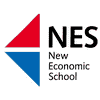
20. State University of Management

21. Moscow State Technological University "Stankin"

22. Moscow Polytech

23. Mendeleev University of Chemical Technology of Russia

24. Moscow State University of Railway Engineering

25. National Research University of Electronic Technology

26. Russian State University of Oil and Gas
27. russian state social university.

28. Pushkin State Russian Language Institute

29. Russian State Agricultural University

30. Moscow International University

31. Moscow State Technical University of Civil Aviation

Universities for Art & Design near Moscow
| University | City | ||
|---|---|---|---|
| 400 | 27 | Nizhny Novgorod | |
| 468 | 32 | Voronezh | |
| 571 | 6 | Sumy | |
| 635 | 3 | Saint Petersburg | |
| 636 | 7 | Saint Petersburg | |
| 636 | 21 | Saint Petersburg | |
| 637 | 11 | Saint Petersburg | |
| 646 | 3 | Kharkiv | |
| 677 | 1 | Minsk | |
| 719 | 1 | Tartu |
Art & Design subfields in Moscow
News from Brown
Local high schoolers gain design, engineering skills and ‘maker’ mindsets at brown design workshop.
Educators from Blackstone Academy Charter School in Pawtucket partnered with Brown’s makerspace to launch a new science class, empowering teens to design and create, and sparking interest in engineering.
Serena Vu, a junior concentrating in mechanical engineering is among a team of Brown undergraduates that teach and mentor local high schoolers in the Brown Design Workshop as part of a new partnership with Blackstone Academy Charter School. Photos by Lynda Curtis.
PROVIDENCE, R.I. [Brown University] — Sure, they still use textbooks and pencils — but just as frequently, students from Blackstone Academy Charter School are now working with laser cutters, 3D printers, drills, saws and sanders.
That’s thanks to a new class called Makerlab, which is the result of a partnership between educators at the Pawtucket, Rhode Island, high school and Brown University students and staff at the Brown Design Workshop . The high-schoolers travel to Brown's 10,000-square-foot makerspace each week to transform ideas into creations, learning woodworking and metalworking along with design and engineering skills.
Blackstone Academy science teacher Aaron Weinblatt created the elective in 2022 to offer a creative complement to traditional science courses for students at the public high school, which serves more than 350 students from Pawtucket, Central Falls and Providence. Makerlab's project-based curriculum, developed with Brown engineering students, introduces fundamental concepts like structural integrity, material properties, prototyping and iteration. Immersed in hands-on design and engineering challenges, students gain resilience and problem-solving skills, Weinblatt said.
"Tools can be intimidating, and fixing, designing or making something can feel overwhelming,” Weinblatt said. “This class aims to empower students with the confidence to design, fix and make so they can see themselves as problem-solvers and makers. We want students to grasp the engineering design process, embrace iteration and balance goals with constraints. Building grit is also key. Trying, failing and adapting — that's real engineering in action and a profound life skill."
Aalyah Matos, a ninth-grader at Blackstone Academy, had little experience with tools but was astonished by how much she enjoyed the hands-on projects and how useful the skills she gained proved even in the short term.
"Before this class, I would have said I'm not into building things, but seeing these projects come together is fascinating," Matos said. "Plus, learning to use tools and machines like a drill press is so much fun — and it's something I'd never encounter normally. Now, if something breaks at home, I feel like I might actually be able to fix it myself."
Hands-on lessons in art, design and STEM
Around a dozen high-schoolers join Weinblatt and a team of Brown mentors every fall and spring in the student-run Brown Design Workshop. Starting with introductory woodworking and sheet metal workshops, they learn design basics, sketch ideas and master the safe use of tools to craft projects such as Pinewood Derby cars, birdhouses and towers. The class culminates in a final project that challenges students to combine their newfound skills to design and create functional items for the school. Past projects have included wood hall passes, props for drama classes, fidget toys for focused learning, storage bins and even gavels for mock trials.
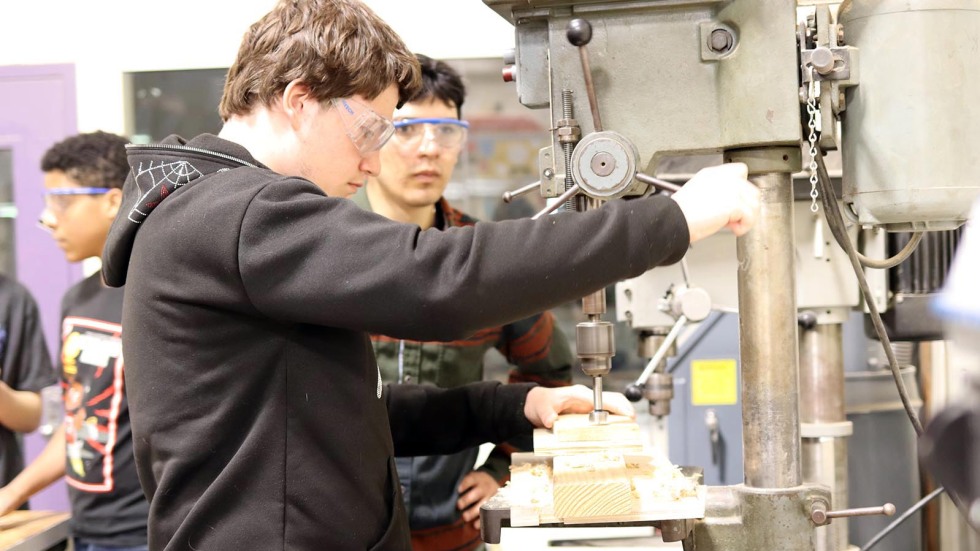
Starting with introductory woodworking and sheet metal workshops, the high schoolers learn design basics, sketch ideas and master the safe use of tools to craft projects such as Pinewood Derby cars, birdhouses and towers.
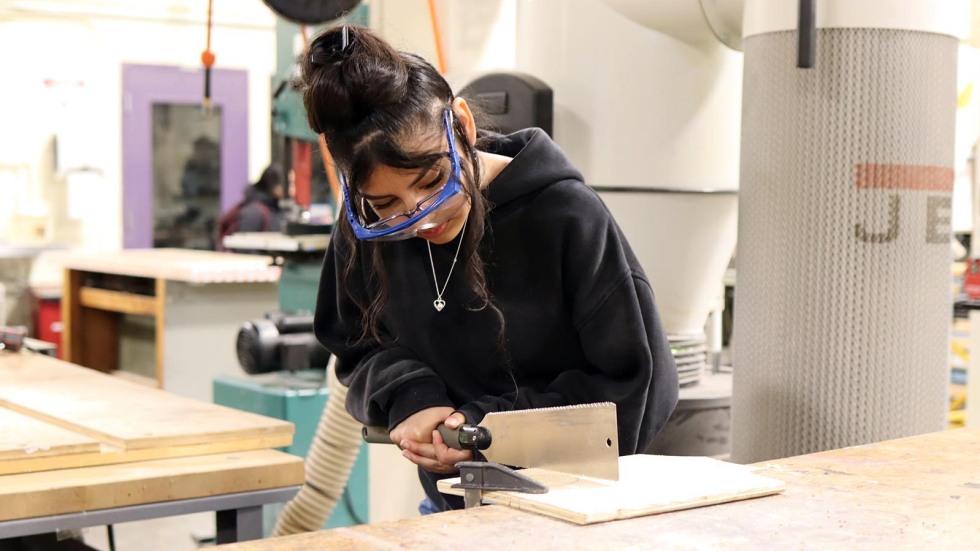
The class culminates in a final project that challenges students to combine their newfound skills to design and create functional items for the school. Past projects have included wood hall passes, props for drama classes, fidget toys for focused learning, storage bins and even gavels for mock trials.
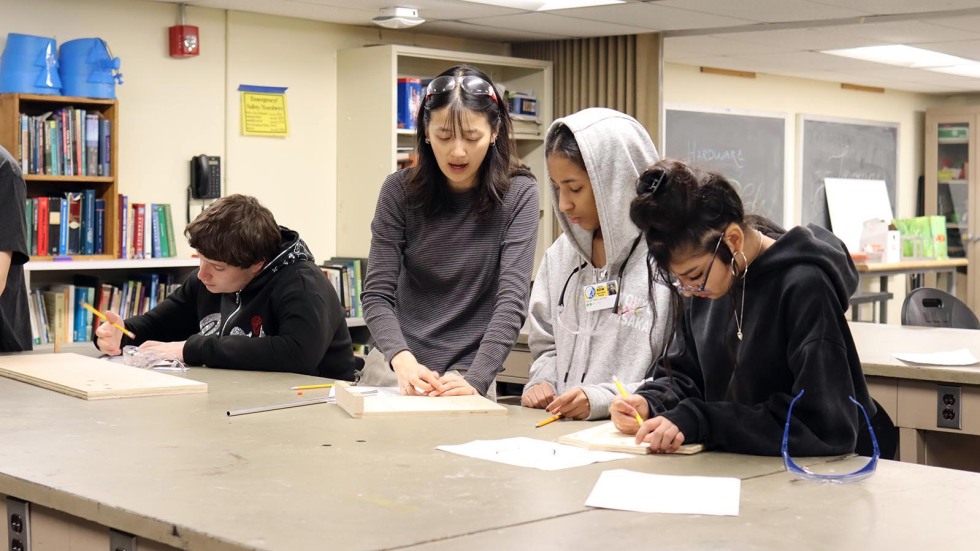
Immersed in hands-on design and engineering challenges, students gain resilience and problem-solving skills.
Weinblatt said the elective caters to a diverse student body, often igniting an excitement for creation in students with a wide variety of interests.
"The class attracts a great mix of students," he said. "Some took a 3D printing class, loved it and want to explore it further. Others are drawn to engineering or are creative and see the art and design potential of building. There's even a spark of interest in the trades for some. It's a great way to expose students to different possibilities."
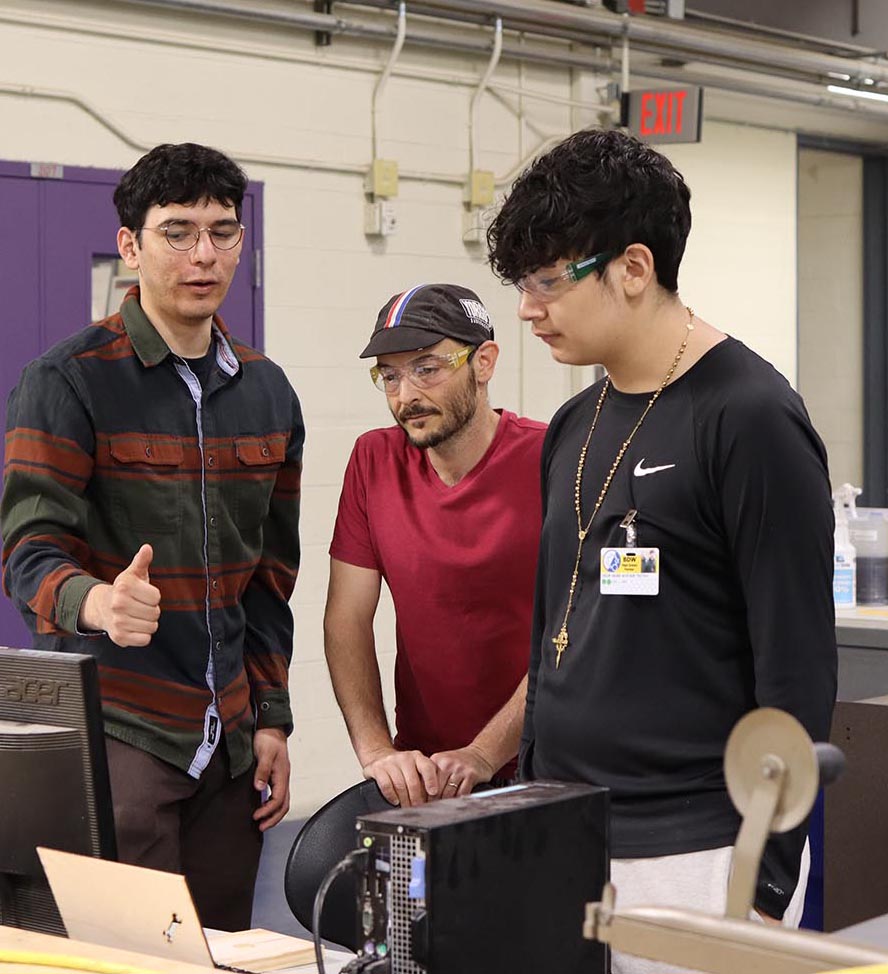
Louise Manfredi, who directs the Brown Design Workshop, says that early exposure to STEM can unlock a world of opportunities for kids. That's why since joining Brown last summer, Manfredi has been deepening the workshop's engagement locally, collaborating with schools to turn Brown's makerspace into a welcoming hub for local students to experiment, learn and create.
"My journey to where I am today likely began in my high school years," said Manfredi, an associate professor of the practice of engineering at Brown. "In the U.K., hands-on tech education is part of the standard curriculum, but in the U.S. that's not always the case. These experiences are crucial because they foster creativity and illuminate the intersection of art, design and STEM. Sharing these skills and opening doors to these spaces is how we get more kids to see themselves as engineers, inventors and makers."
Beyond partnerships with Blackstone Academy and other Providence-area schools, Manfredi aspires to create summer programs that welcome more middle and high schoolers to the makerspace. Brown's committed student body, she said, presents a unique advantage for realizing that vision — a pool of dedicated mentors.
"We have so many students at BDW who are incredibly passionate about teaching and sharing their knowledge,” Manfredi said. “It's like having a captive audience ready and eager to contribute. We're working to establish more mechanisms to facilitate this exchange and expand on these outreach initiatives."
Weinblatt said students from Brown’s School of Engineering have proven vital to the Makerlab course’s success.
"The class wouldn't be possible without the dedicated student volunteers at the BDW," he said. "With my teaching load, I wouldn't have time to prepare all the materials for each project. However, with this partnership, the Brown students and I can discuss the lessons beforehand, ensuring everything is ready when we arrive on campus. They invest significant time in the class, and it's a huge part of why it's been so successful."
Video: A look inside the Brown Design Workshop
The Brown Design Workshop is the University’s go-to makerspace where its members can use the vast array of tools and machines to create almost anything they dream up.
The Brown students supporting Weinblatt's class work as monitors at the Brown Design Workshop. In this role, they oversee machine operations, equipment and activities in the makerspace. Weinblatt said their expertise with the space and tools and their grasp of advanced engineering concepts provide a distinctive learning opportunity for high-schoolers.
"There are many instances where students experiment, and I often reach my technical limits much faster than the Brown undergraduates,” Weinblatt said. “The Brown students are then not only teaching our students basics, like using a pull saw or a finger brake for sheet metal bending, but also guiding them in designing solutions and exploring tool and material options beyond what I or the students would have considered — it’s just as much a learning opportunity for me as it is the students.”
Bringing student ideas to life
Some of the Brown undergraduates who help facilitate the Makerlab class are engaged with Blackstone Academy in other ways, too. As they finished their final semester at Brown this spring, twins Benjamin and Joshua Phelps — who each earned a bachelor’s degree in design engineering and electrical engineering at Commencement in late May — served as mentors at the charter school to support a robotics class. With supplies donated by the Brown Design Workshop, the brothers led the students in creating a customized toy car as part of the Go Baby Go program , which gifts ride-on cars to kids with disabilities. The toy car was donated to a family in the school community this spring.
As the elective continues on Brown’s campus, Weinblatt is pushing to extend the class time within the parameters of Blackstone Academy’s school schedule. This would give students more than the current one-hour block, allowing them to delve deeper into projects. The popularity of the course is growing too, he said, with some of the high schoolers even opting to take the class for a second time.
Nuno Dosanjos, a ninth-grader at the school, said he enjoyed the class so much that he has plans to enroll again next year.
"Through this experience, I feel like a creative person," he said. "You walk in and have all these tools that can bring your ideas to life, and it's so much fun to make something that you've imagined."
Related news:
In a significant first, researchers detect water frost on solar system’s tallest volcanoes, breaking ground: could geometry offer a new explanation for why earthquakes happen, brown ranks among top 100 universities nationally in new patents issued.
- Skip to primary navigation
- Skip to main content
- 110 Baker St. Moscow, ID 83843
- 208.882.1226
A Classical & Christ-Centered Education


IMAGES
VIDEO
COMMENTS
In grades 1-5, homework should: Reinforce and allow students to practice skills learned in the classroom. Help students develop good study habits and routines. Foster positive feelings about school. In grades 6-12, homework should: Reinforce and allow students to practice skills learned in the classroom. Prepare students for engagement and ...
Thus, whereas a student in Grade 2 should receive a total of 20 minutes of homework per night (i.e., 2 x 10 minutes), a student in Grade 11 should receive a total of 110 minutes (i.e., 11 x 10 minutes). Key Findings. High school students should not receive more than two and a half hours of homework per night.
1. Make it Relevant and Meaningful. Connect the school homework to their lives, interests, or current events to make it more meaningful and relatable. For example, if it's Christmas time, you can ask your students to explore the themes of charity, storytelling, etc. 2.
Enriching children's classroom learning requires making homework not shorter or longer, but smarter.". Paul goes on to describe specific practices, like spaced repetition (in which information is presented and repeated spaced out over time), retrieval practice (testing or quizzing not for assessment, but to reinforce material learned), and ...
between homework and achievement, defines homework as "tasks assigned by school teachers that are meant to be carried out during noninstructional time" (Bembenutty, 2011b, p. 185). There is considerable debate over the effective- ... design homework to meet specific purposes and goals, more students complete their homework and benefit from ...
When homework is used as a tool to build social, emotional, and academic learning beyond the school day, it takes on a different look and purpose than just more work to do at home. The goal of Responsive Classroom schools is to design homework that meets the basic needs of significance and belonging for every student by strengthening ...
A schoolwide effort to reduce homework has led to a renewed focus on ensuring that all work assigned really aids students' learning. I used to pride myself on my high expectations, including my firm commitment to accountability for regular homework completion among my students. But the trauma of Covid-19 has prompted me to both reflect and adapt.
Create a board game. Complete a quiz - you could also ask students to write the quiz in groups and then swap and complete for homework. Write a lesson plan for teaching the topic to a younger class. Teach the teacher - create a poster, Complete a series of exercises. Complete a family tree, real or imaginary.
2. THE CREATION OF HOMEWORK. In this first volume, we focus on the creation of effective homework. Our motivation in exploring the design aspects of homework first is perhaps best captured by the writings of Joyce Epstein and Frances Van Voorhis who observe: "Most research examines what students do, and whether and how the completion of homework or time spent affects student achievement or ...
1. EFFECTIVE HOMEWORK PRACTICES. This issue of PRIMUS is the second of a two-part special issue on The Creation and Implementation of Effective Homework Assignments. Part 1 of the special issue focused on the creation of effective homework and featured papers that discussed elements of effective homework design and presented innovative homework systems targeting specific learning goals.
Assignment Design for Primary and Secondary School Students. SIEF, Vol.11, No.1, 2022 1513 Another point worth exploring is how assignment design can assist in piqueing students' interest in studying. Wang and Zhang (2016) concluded, after examining 33,000 home-work records, that student interest in homework has a greater impact on academic pro-
Firstly, divide your class into smaller ability groups, 3 or 4 groups would work. Each group can be given their own coloured homework basket. You then fill the coloured homework baskets with activities, games and task cards that the students can take home and play with parents, carers or older siblings throughout the week.
Many teachers and parents believe that homework helps students build study skills and review concepts learned in class. Others see homework as disruptive and unnecessary, leading to burnout and turning kids off to school. Decades of research show that the issue is more nuanced and complex than most people think: Homework is beneficial, but only ...
Creative homework assignments can be fun and, at the same time, teach and enhance subjects introduced in the classroom. For more creative homework ideas, be sure to check out our lesson plans and YouTube videos! Learn some ways that you can make homework assignments both more exciting and more effective with our Creative Homework Ideas!
This study used a randomized pretest-posttest clustered design to examine the effect of 3 homework purposes (i.e., practice, preparation, and extension) on 6th graders' mathematics achievement and how this relationship was modulated by the amount of completed homework.A total of 27 mathematics teachers and their 638 students participated in this study.
The strategies of English homework design in primary schools under the background of "Double reduction": A Case Study of the second volume of Grade 3 of foreign research society. Western Liberal ...
higher homework effort when parents are not directly involved with homework unless needed and when they actively encourage the student to complete homework independently (Núñez et al., 2015). School Factors School factors can also play a role in creating homework problems. For example, when schools or teachers do not consistently communicate with
10 Ideas for a Smarter Homework Station for Students of All Ages. Professional home educators and long-time school teachers share their top tips for creating a conducive learning environment at home. Put their tips to the test by creating a dedicated homework station and watch your home — and your kid — get a little smarter.
Liu (2022), however, presented a case study with detailed illustration of how English homework in primary schools should be designed by citing an example from one module from the grade five ...
Gamifying online homework activities and learning assignments is an effective approach to facilitate students' engagement and enjoyment. While incorporating game elements to gamify homework and learning assignments promoted positive psychological and learning outcomes, the mere use of these elements brings several flaws associated with the gameful design that constrains the perceived gameful ...
Learning As A Family Affair. The School House sees learning as a family endeavor. An innovative aspect is its approach to homework. Project homework occurs weekly with the expectation that the ...
Moscow school children are about to face the new era of education. The city authorities have successfully conducted a one-year Moscow Online School pilot project — innovative educational cloud ...
The British Higher School of Art and Design was established in Moscow in 2003 and soon became a highly reputable and internationally facing Art & Design School in Russia due to its ongoing partnership with the School of the Creative Arts at The University of Hertfordshire and an impressive level of resources and equipment. The University of ...
Please note that our approach to subject rankings is based on scientific outputs and heavily biased on art-related topics towards institutions with computer science research profiles. 1. Moscow State University. For Art & Design. # 1 in Russia. # 104 in Europe. Acceptance Rate. 12%. Founded.
PROVIDENCE, R.I. [Brown University] — Sure, they still use textbooks and pencils — but just as frequently, students from Blackstone Academy Charter School are now working with laser cutters, 3D printers, drills, saws and sanders. That's thanks to a new class called Makerlab, which is the result of a partnership between educators at the Pawtucket, Rhode Island, high school and Brown ...
110 Baker St. Moscow, ID 83843; 208.882.1226; Directions; A Classical & Christ-Centered Education
Adobe creativity and design plans offer affordable licensing options for small workgroups, departments, classrooms, labs and entire institutions. Creative Cloud All Apps includes 20+ creative apps, such as Photoshop, Illustrator, and Acrobat Pro, plus generative credits for AI-powered content creation and easy software management and deployment ...